OddCameras.com
Linhof Super Technika IV
The Linhof Technika cameras are a reknown standard for professional
large format photographers. Basically they are field cameras with a
drop bed, like the Graflexes and others, but they have additional back
movements close to a monorail camera. Linhof also made smaller models
which, like the smaller Graflexes, could be used as press cameras.
The Technika series was launched in 1934 with a first model, soon an
improved model II was available. In 1946 a new model III hit the
market. The completely new model IV, presented here, was built between
1956 and 1964. They are called Technika when there is no rangefinder
and Super Technika with a rangefinder. The model V, 1963 - 1976, is a
IV with minor improvements. Even the Master Technika, lauched in 1972
and still made, is basicaly an improved IV. There is a Master Technika
2000, launched in 1994 and also still made, that does not have a
ragefinder (there was an electronic rangefinder available until 1998).
The size folded is roughly 20 x 18 x 11 cm, inluding the rangefinder,
which is close to a Graflex Crown, but it is heavier, about 3 kg, a
150mm lens included. That's 1 kg more than a Pacemaker Crown, but only
400 gr. more than a Speed Graphic.
Some photos:
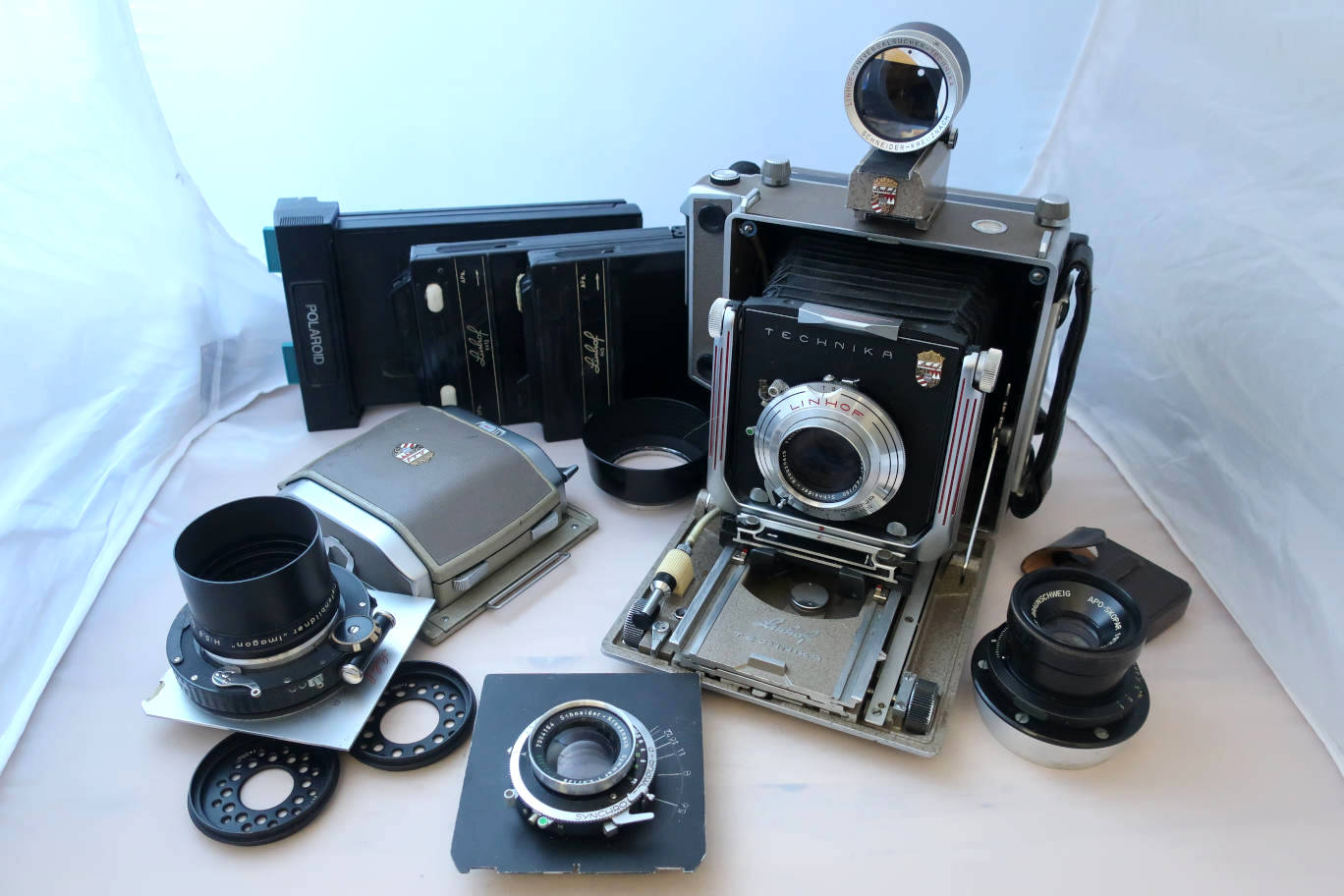
A nice set
with 4 lenses, including an Imagon, a finder and backs.
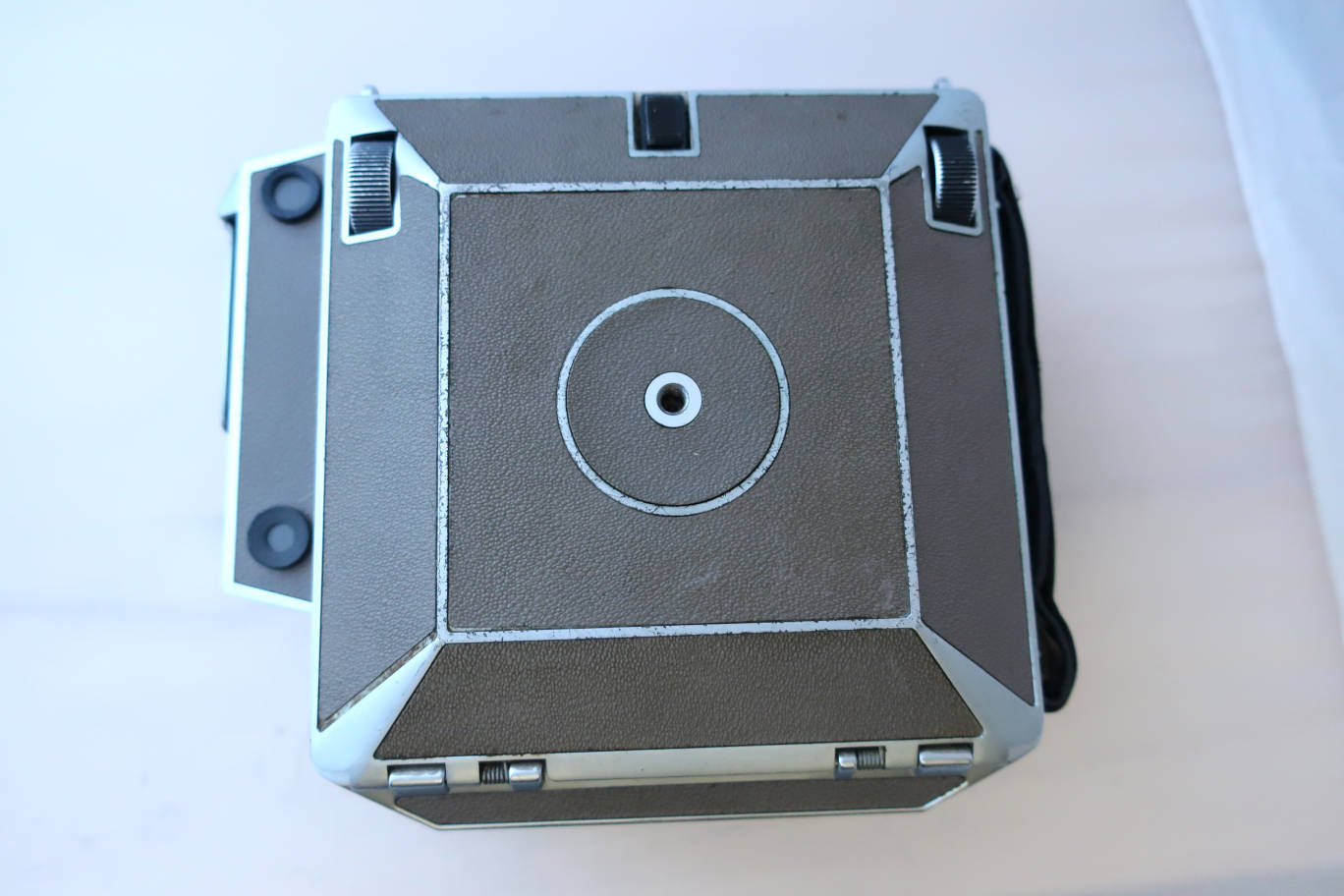
Camera closed. Tripod socket on the bed.
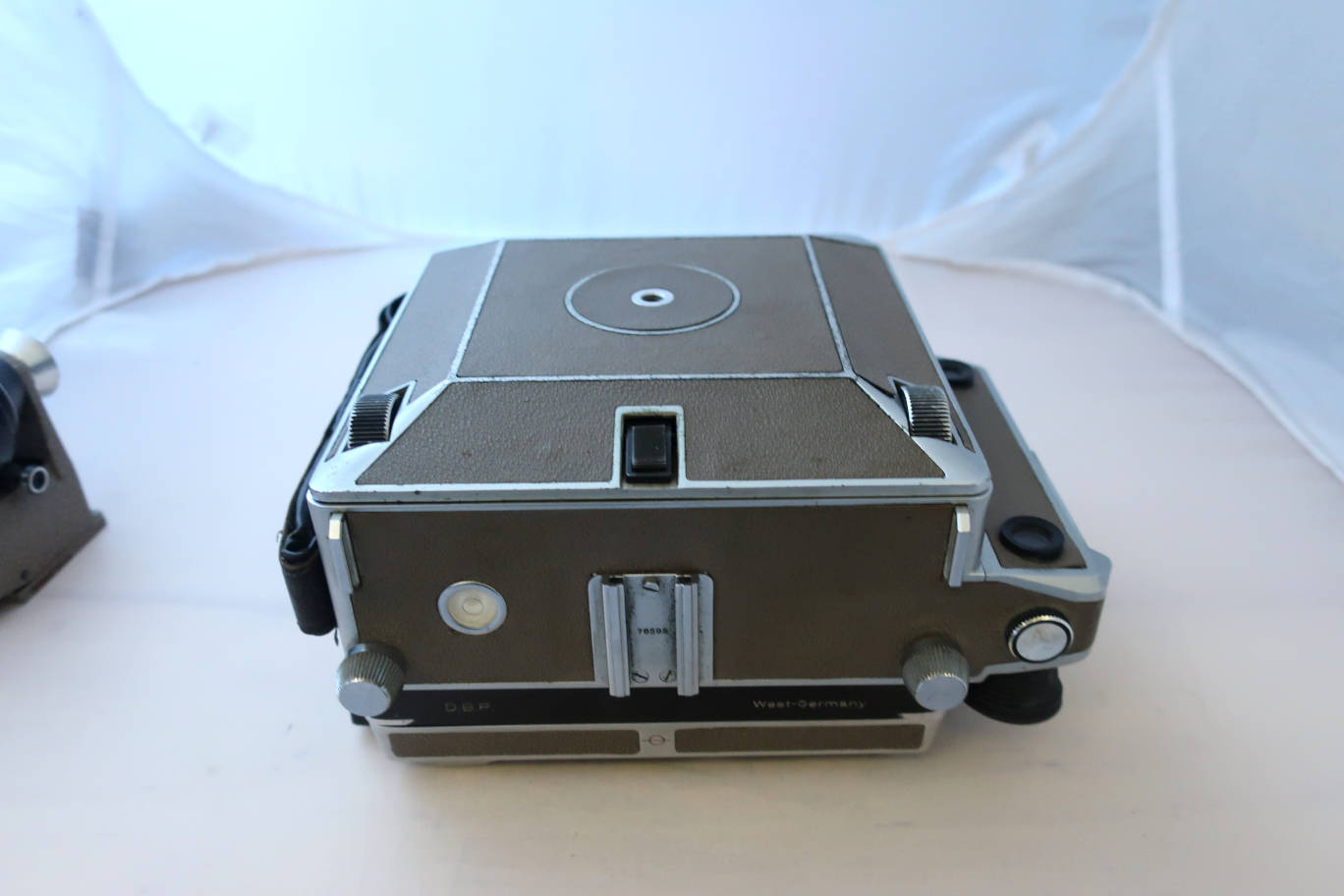
Seen from the top.
The serial number is on the accessory shoe. According to Bob Salomon the
camera is from 1962. Bubble level integrated into the housing.
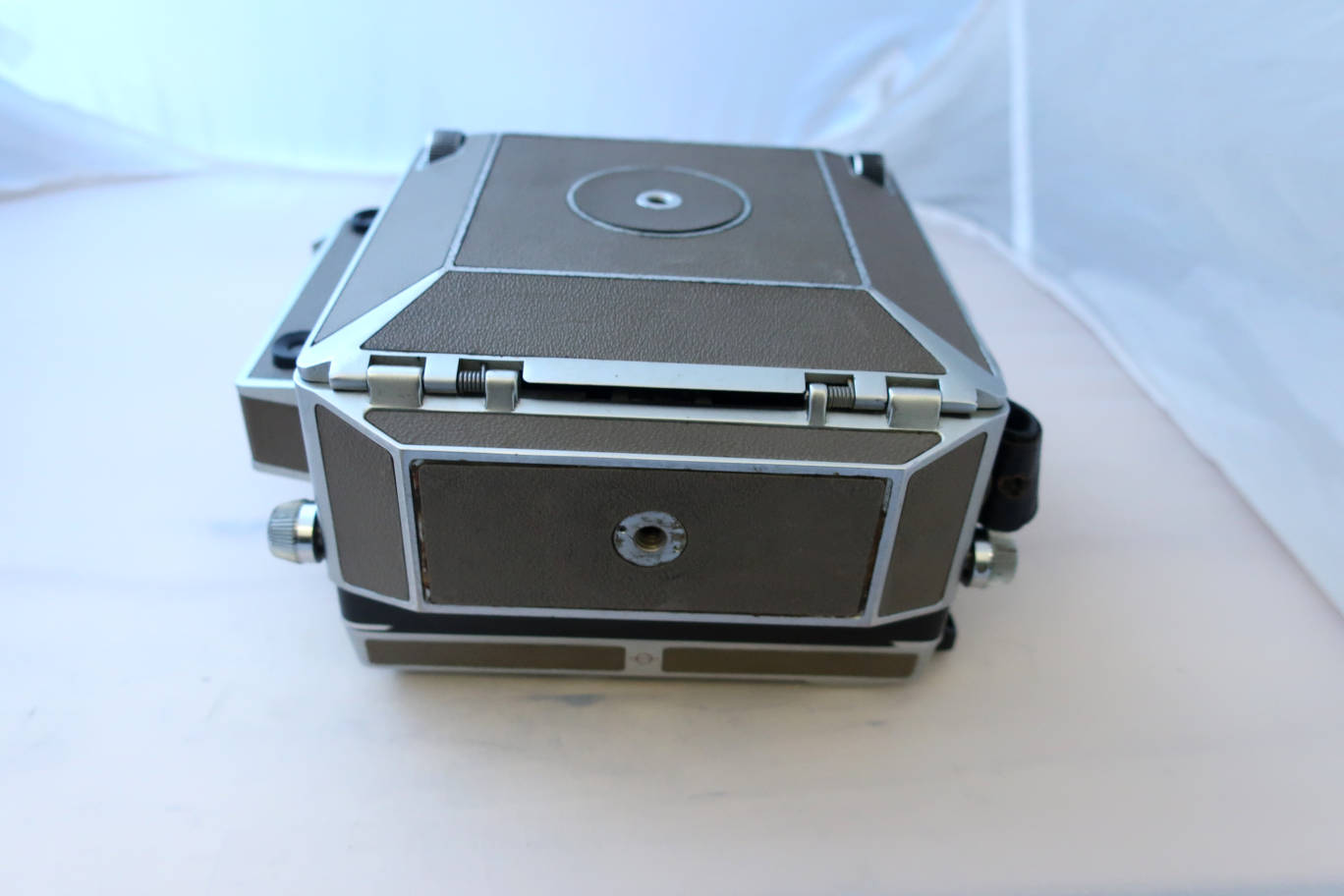
Bottom. Tripod mount.
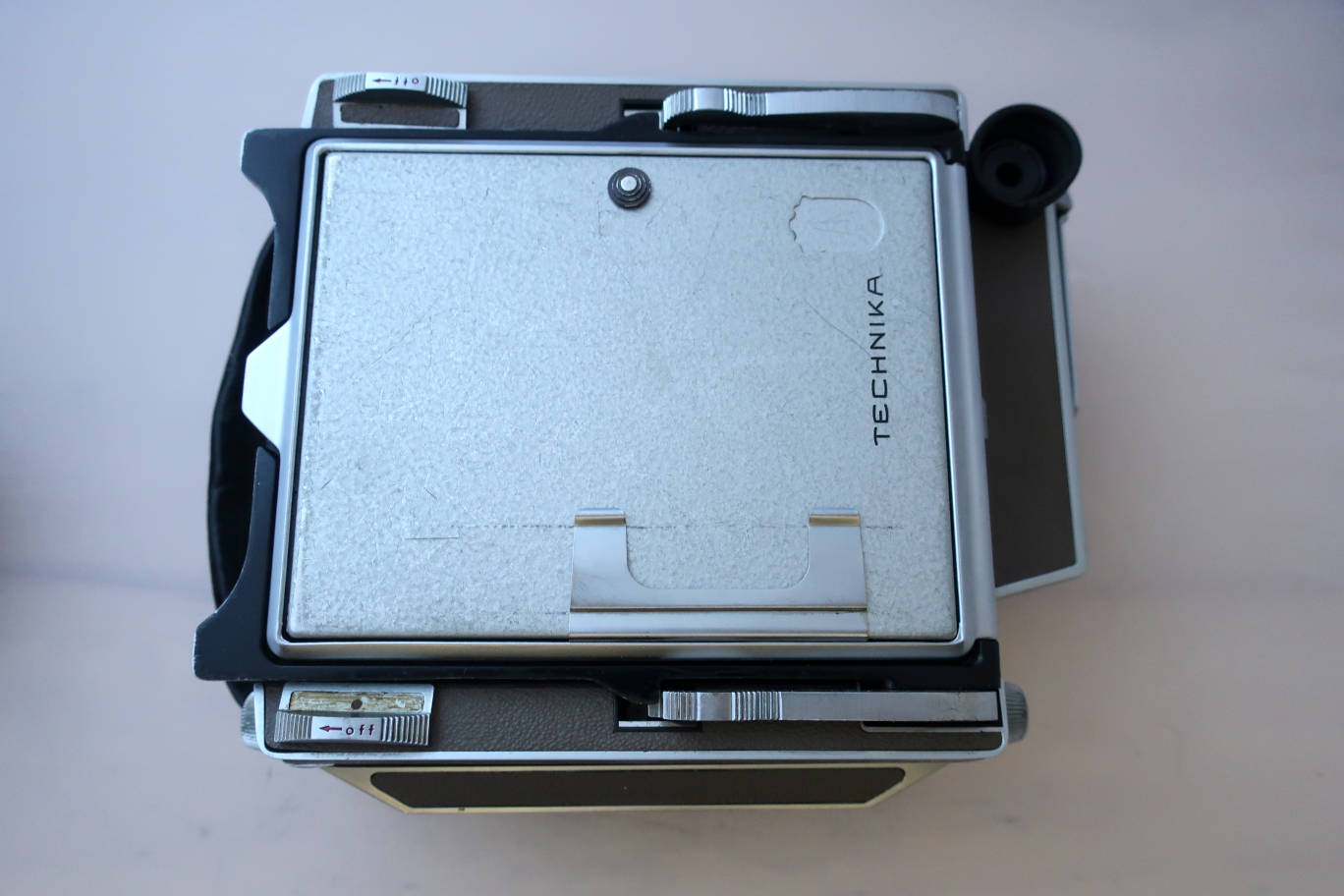
Back. An international 4x5 back. The back can easily be turned from
landscape to portrait format with no restrictions.
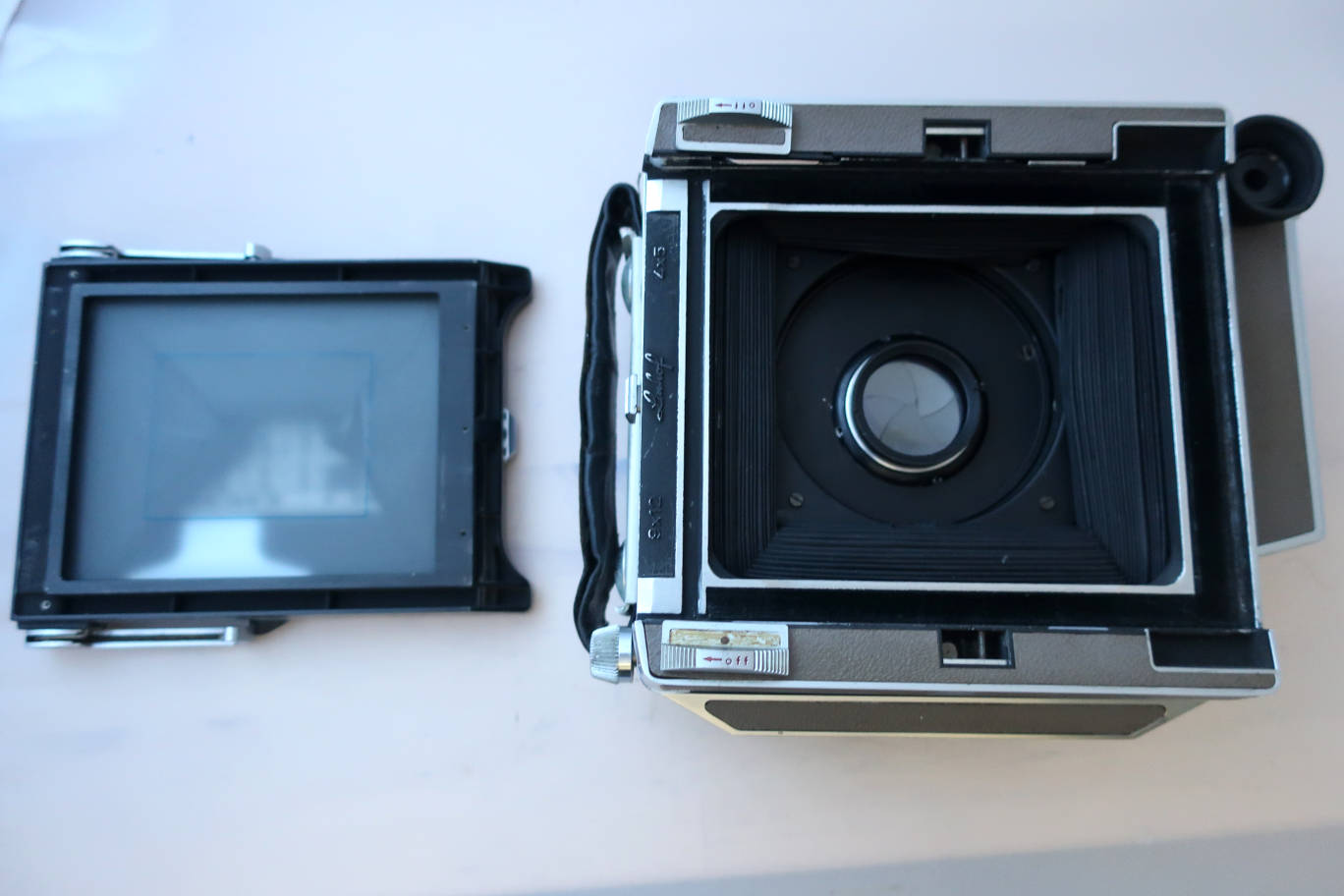
Ground glass deposed.
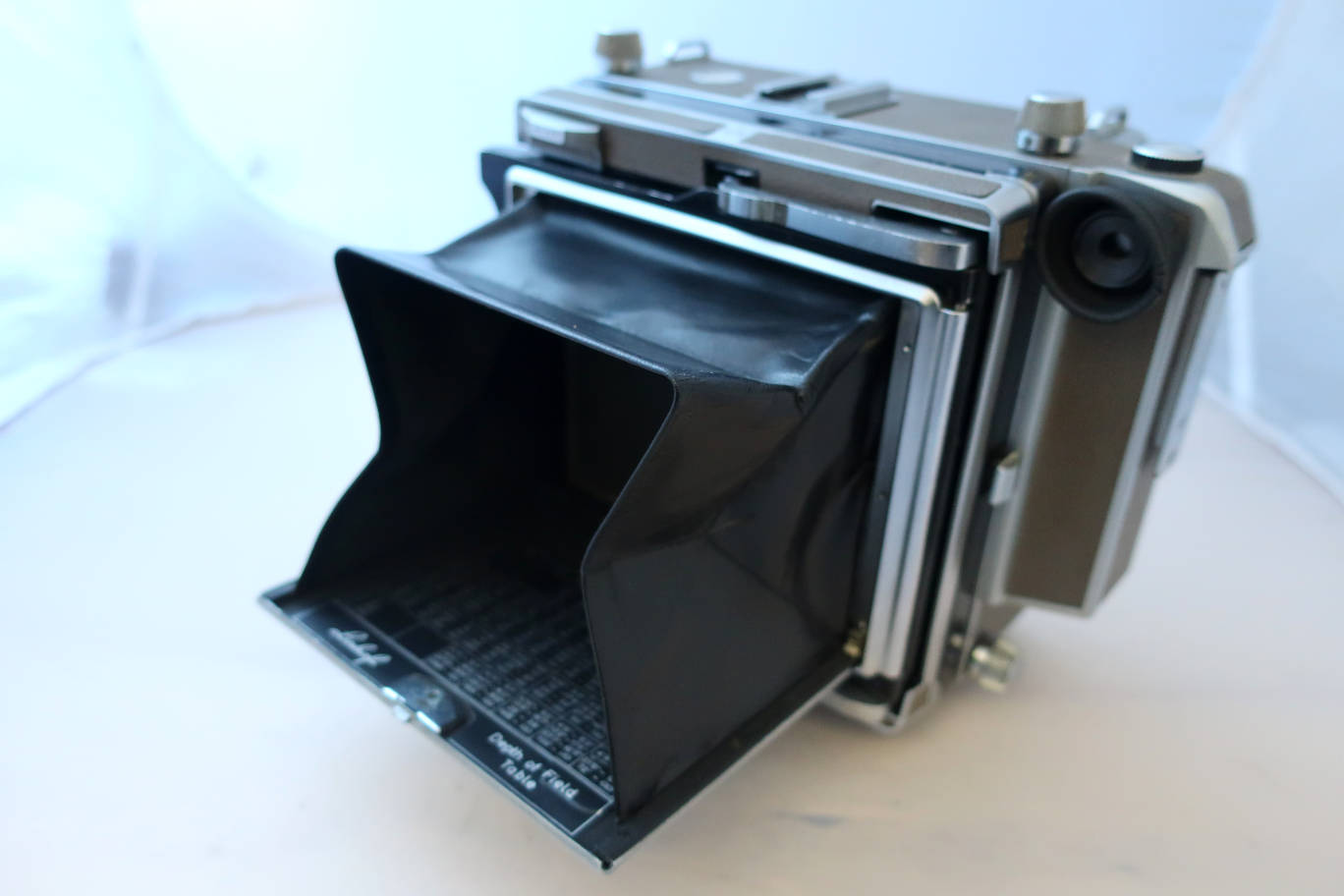
Hood open.
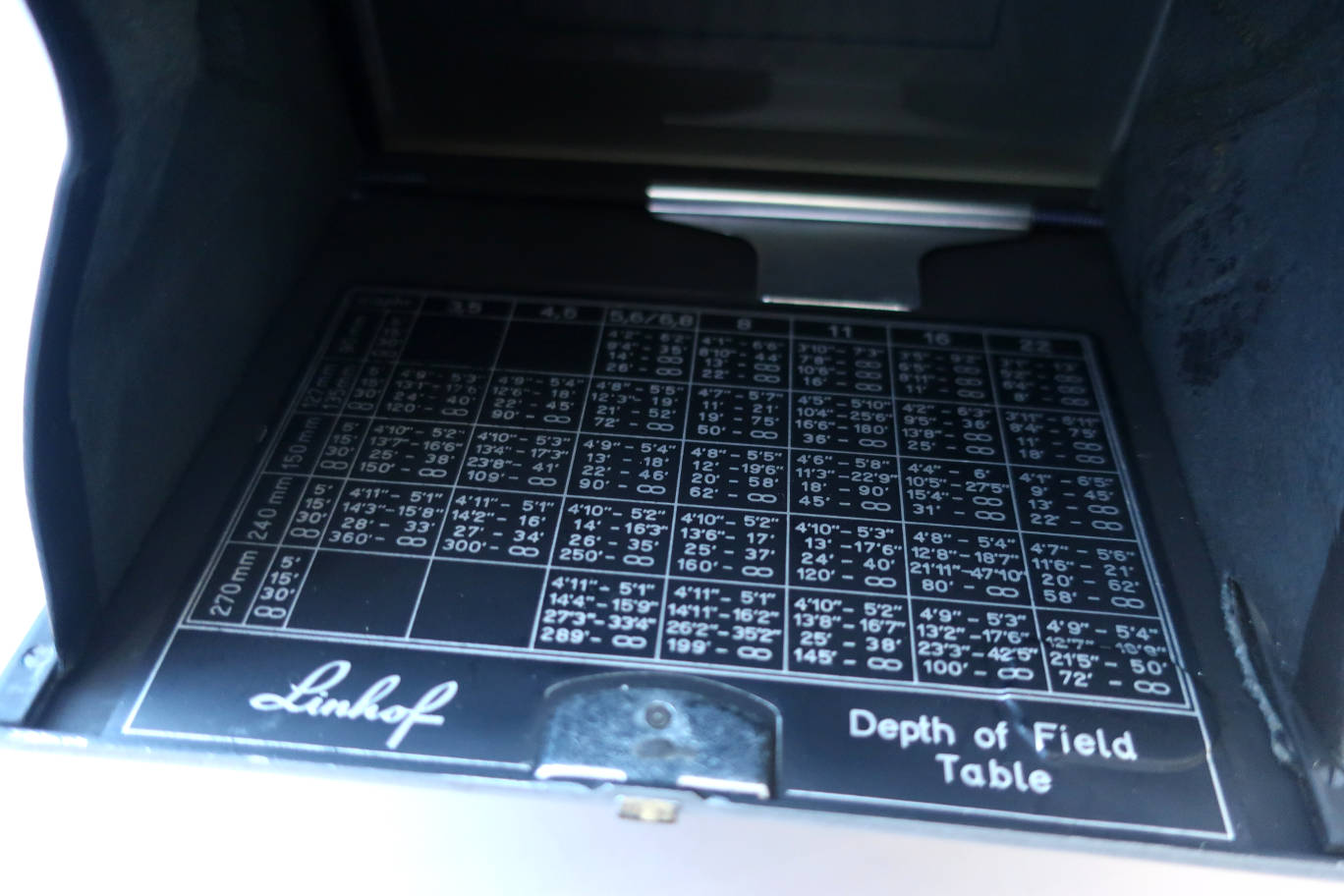
Non-metric DOF table.
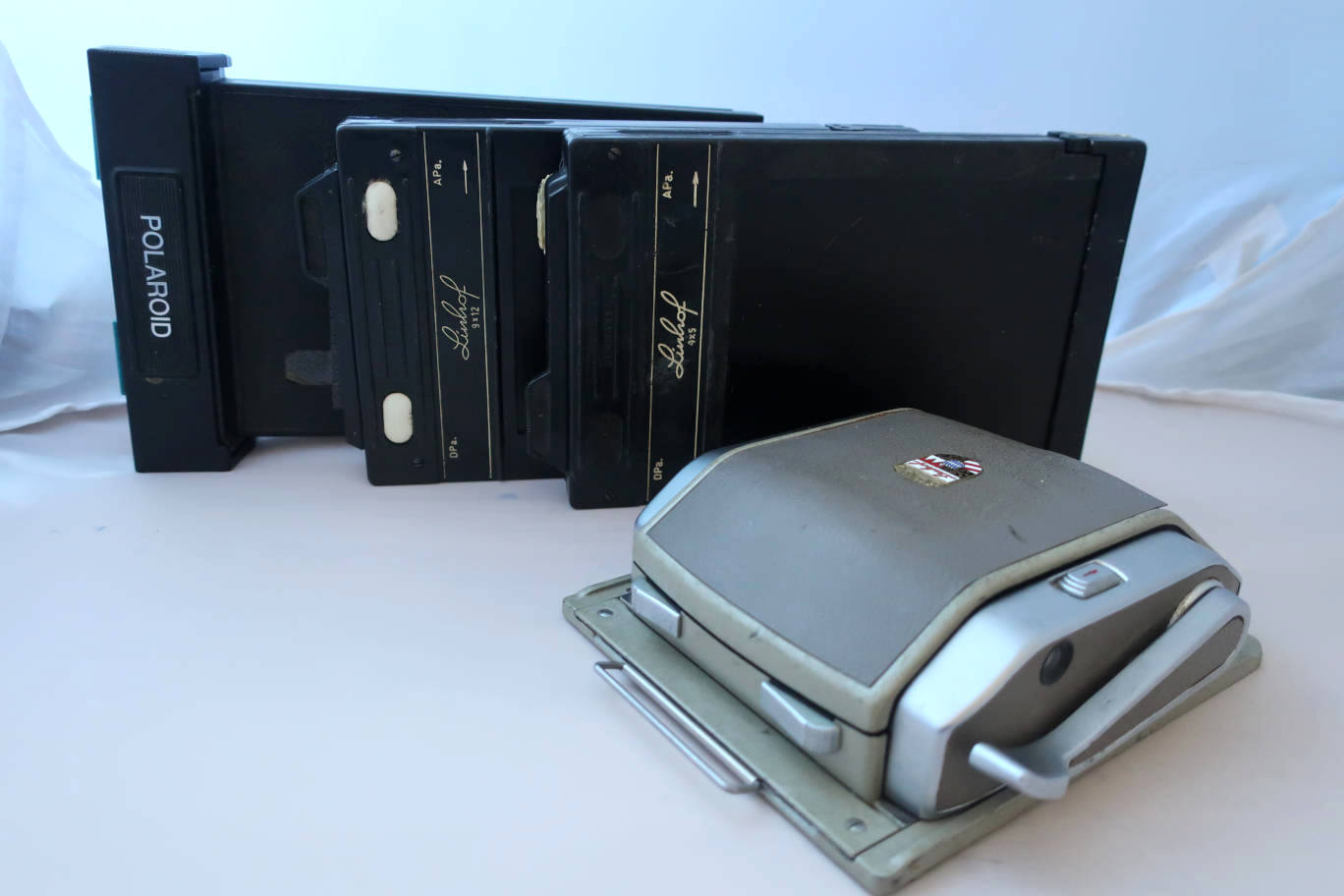
Different backs. The sheet film backs slide under the ground glass.
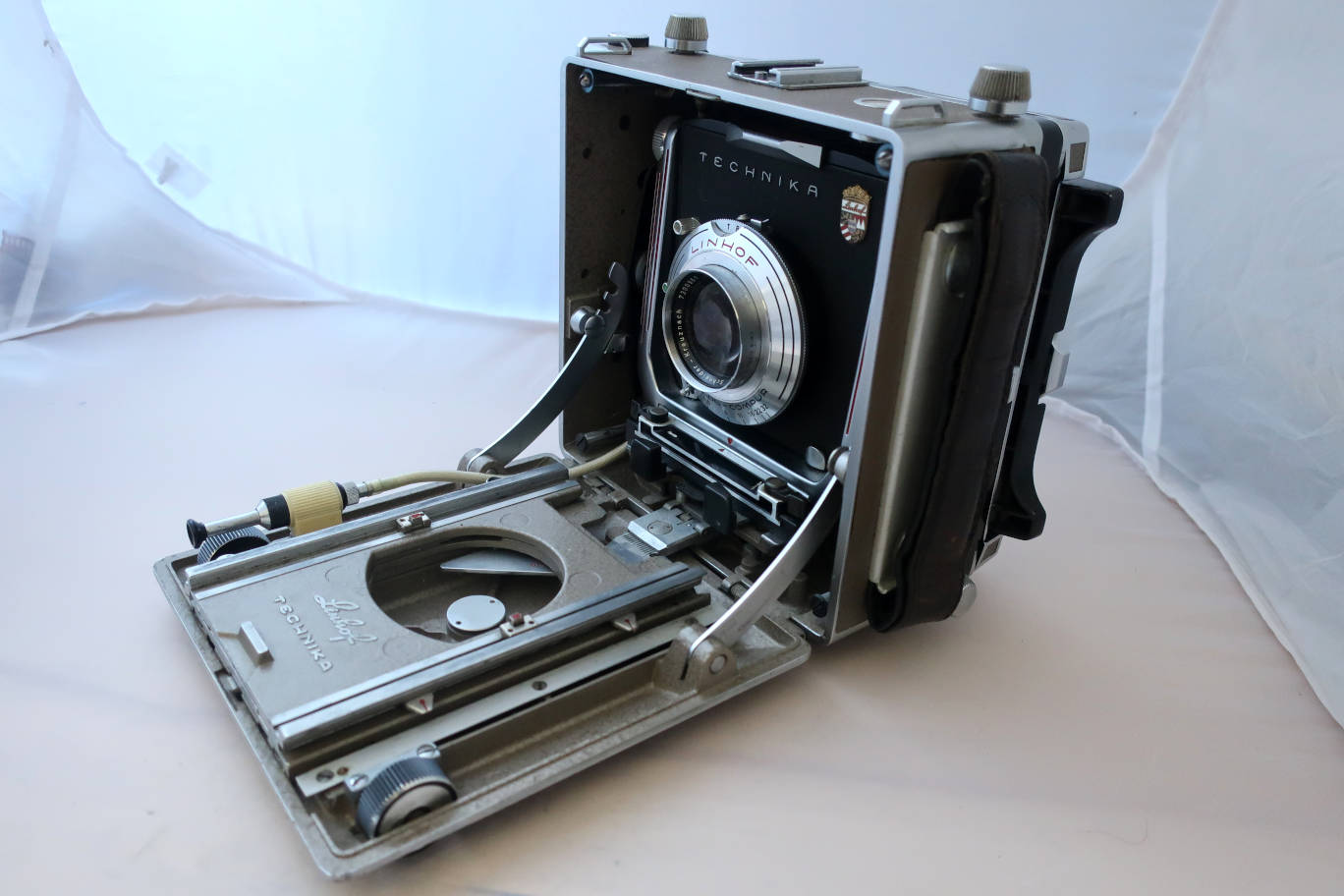
Camera open, not extended yet. On the bed are the stops for the standard
150mm lens. Under the bed you can see the rangefinder cam, it matches this
specific lens which is important for this series. Later models have cams
that are standard for a focal length. Body release on the edge of the bed.
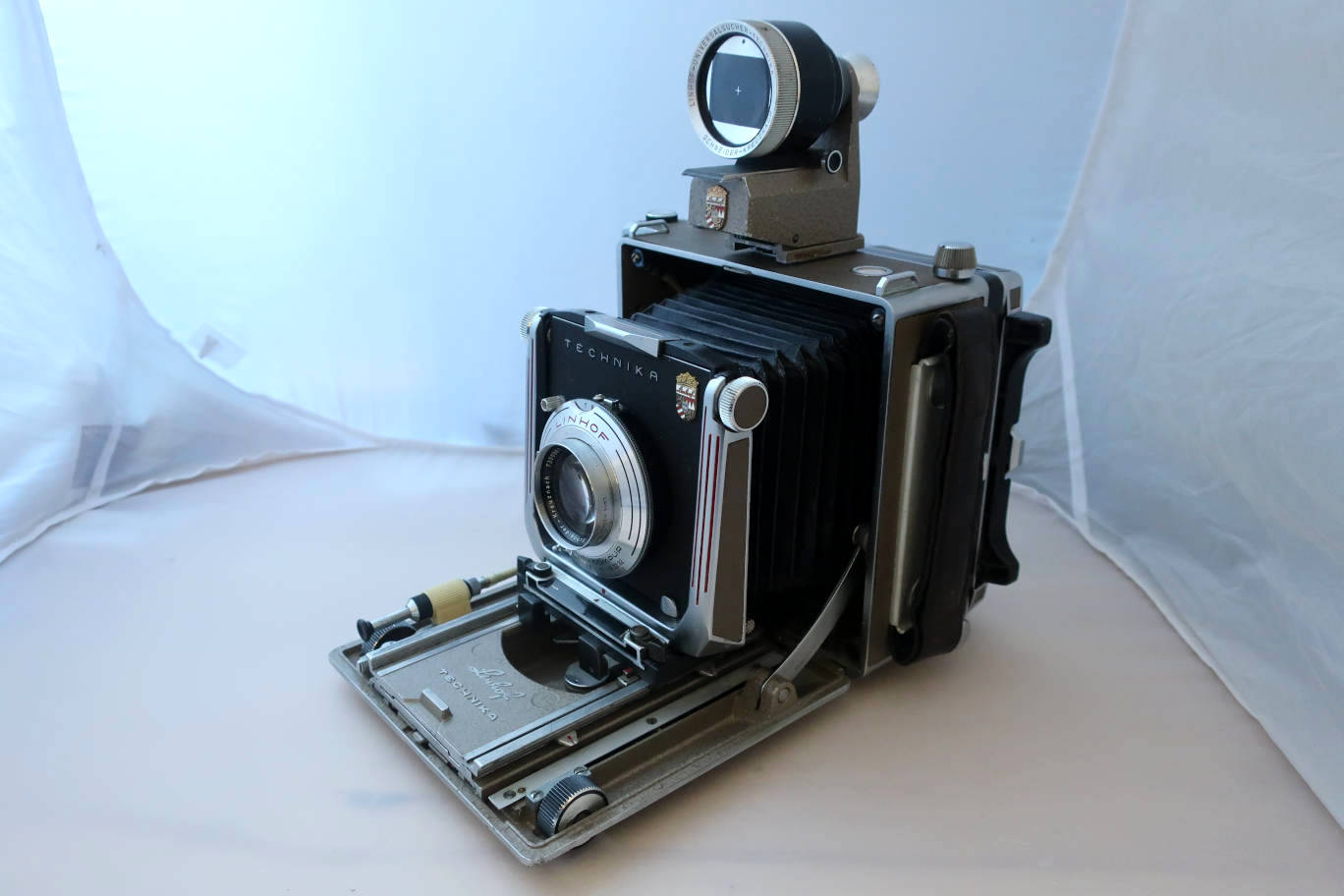
Open, with its original 150mm lens.
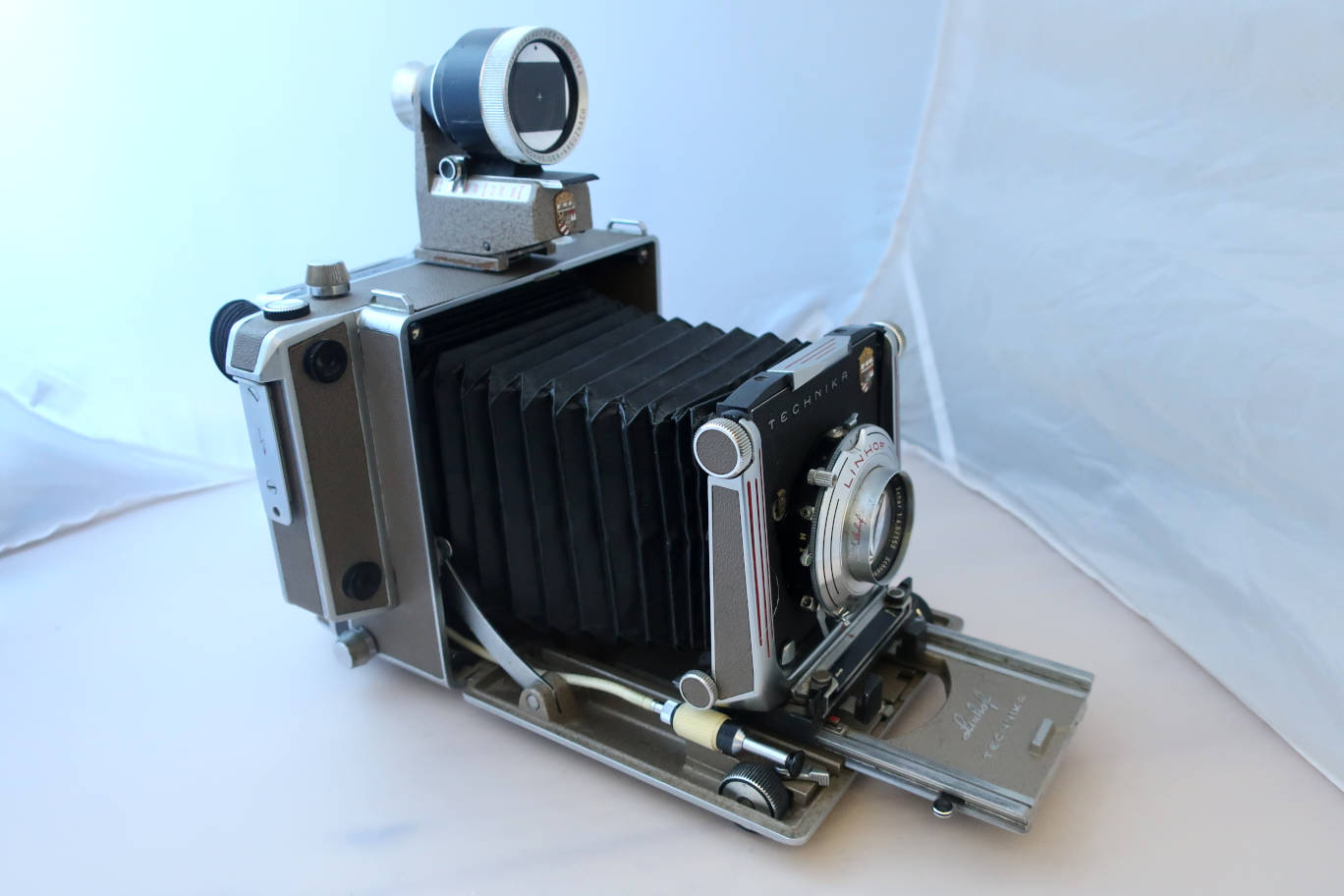
Seen from the left. Close focussing moves the bed out.
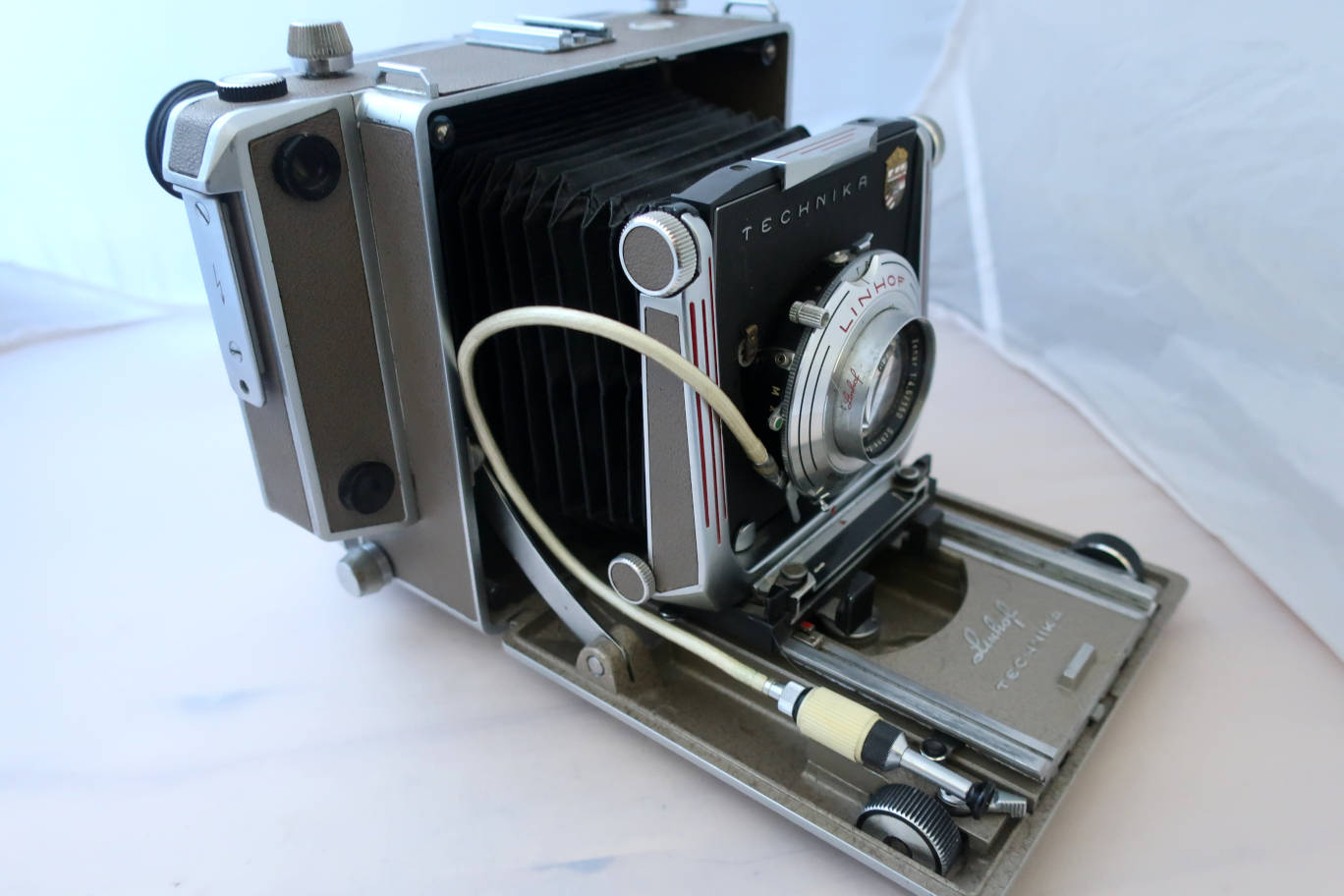
Body shutter release connected to the lens.
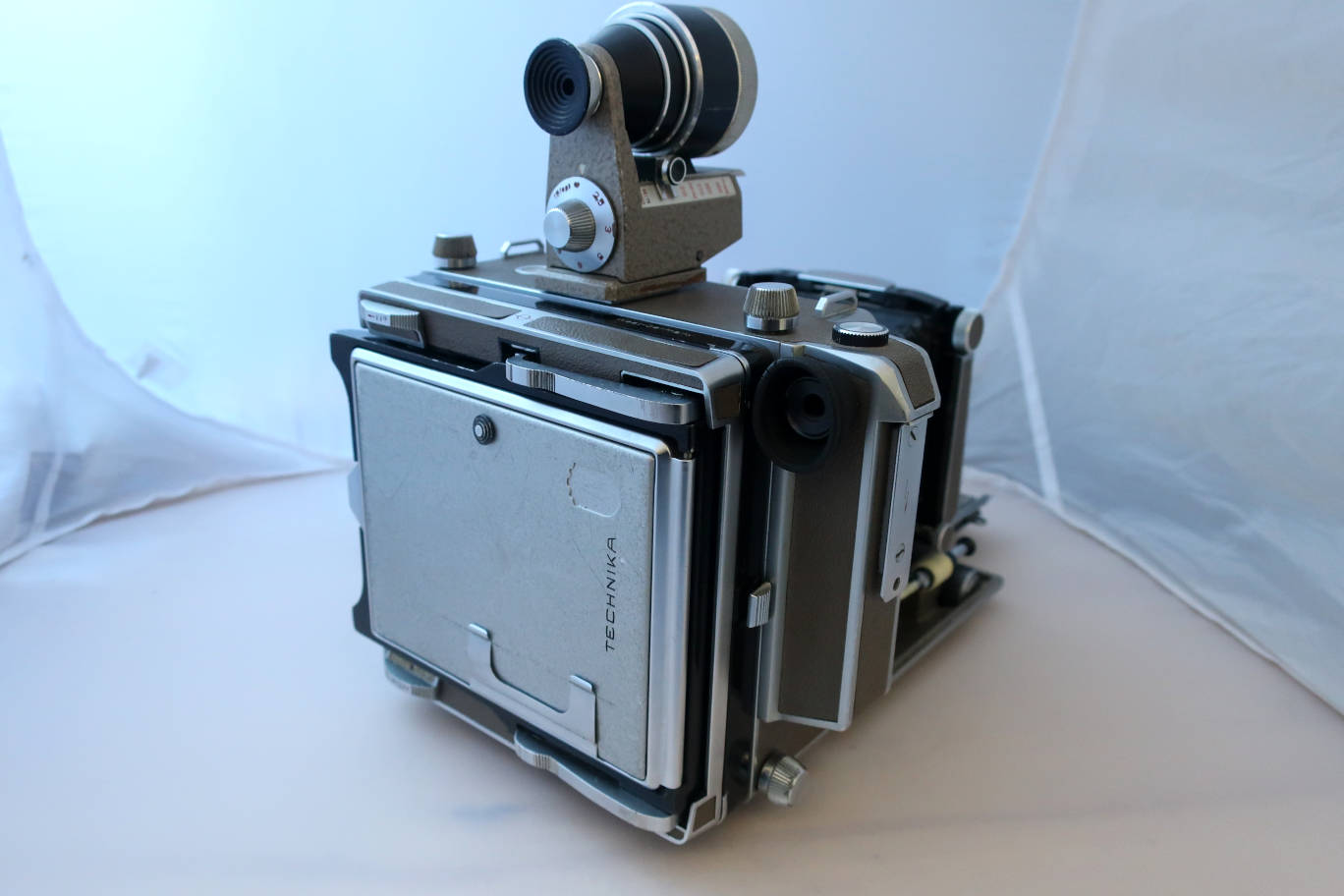
Seen from the back.
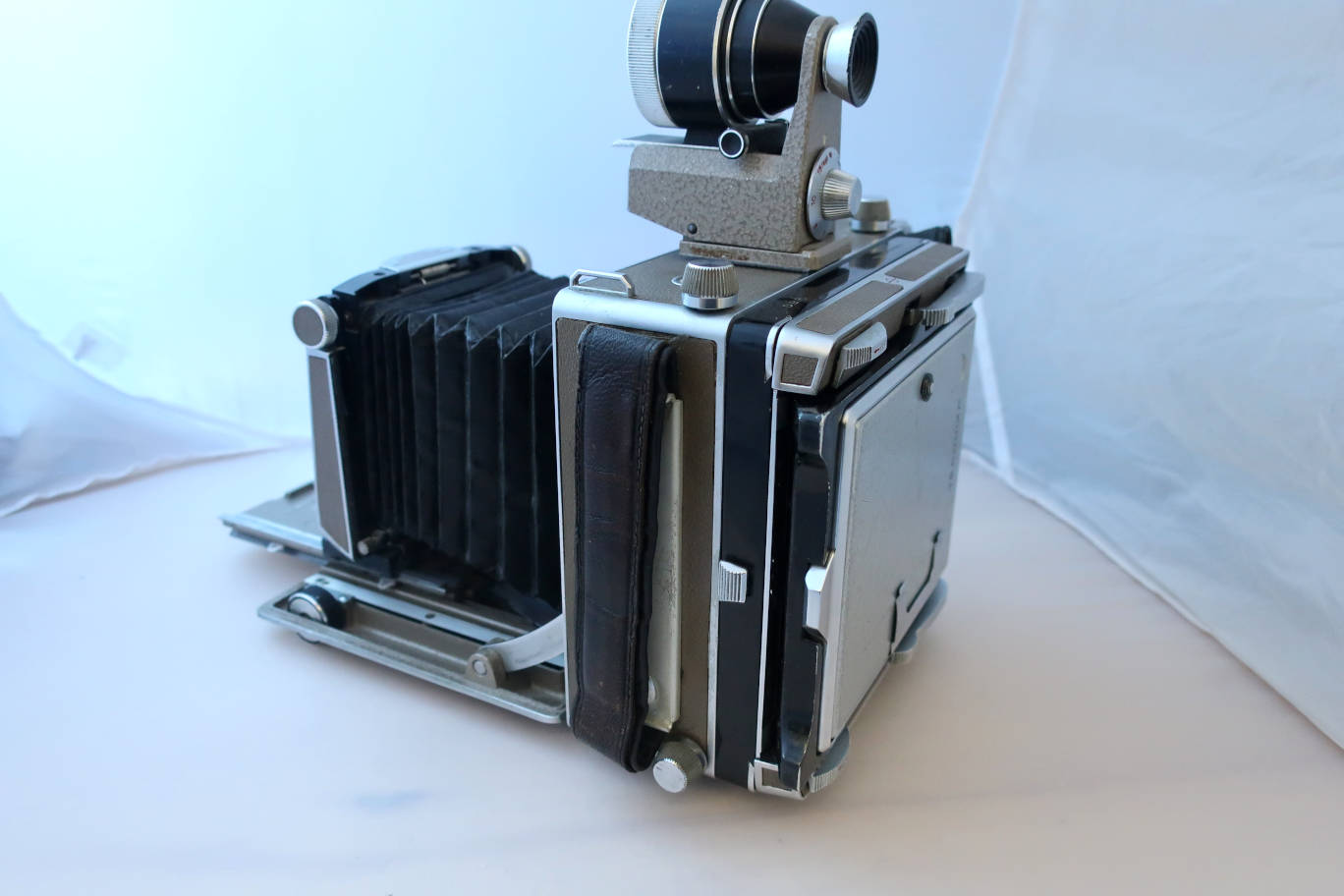
Right side with strap.
Now the movements:
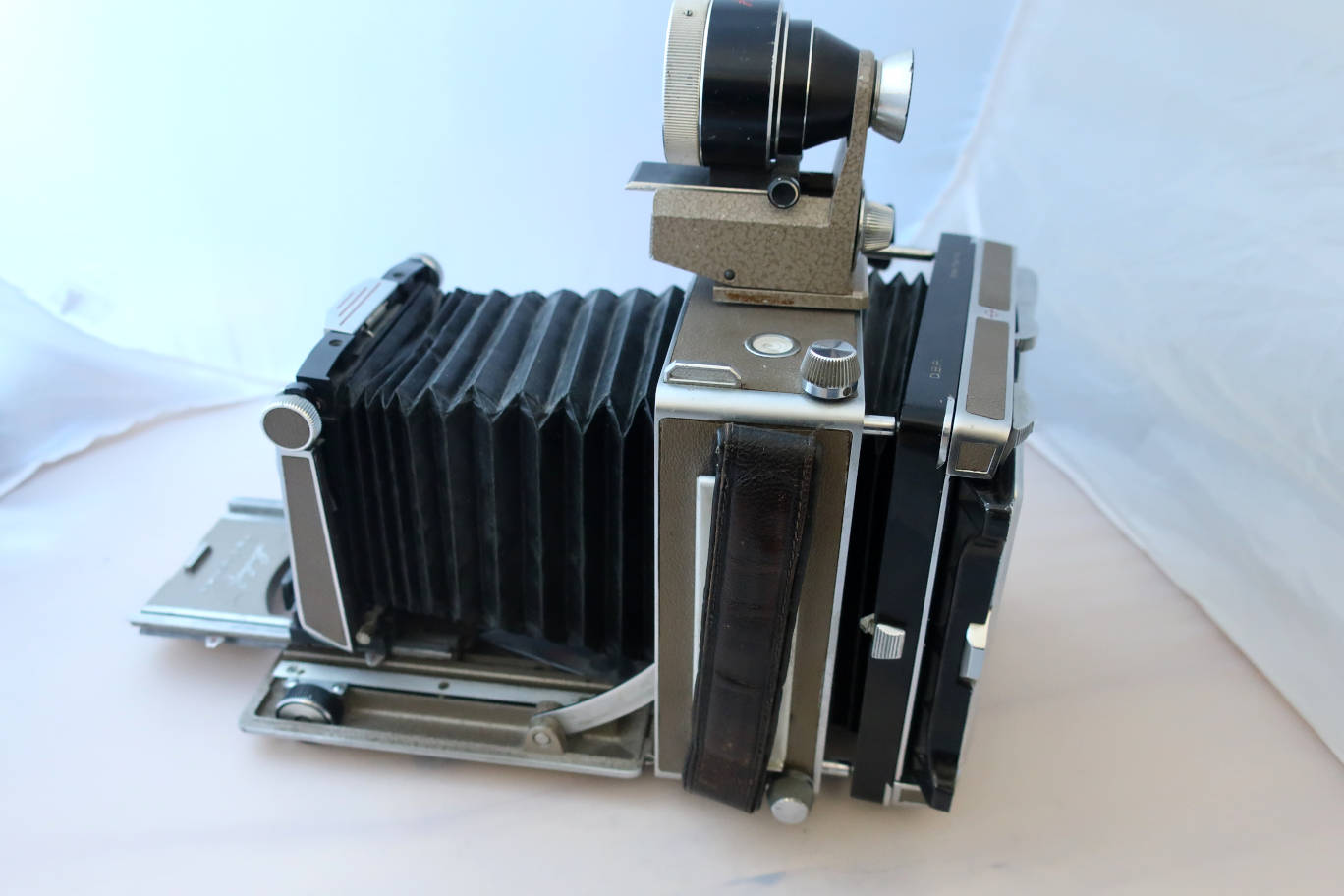
Back extended. Extension could give you an additional 40mm for long
focals.
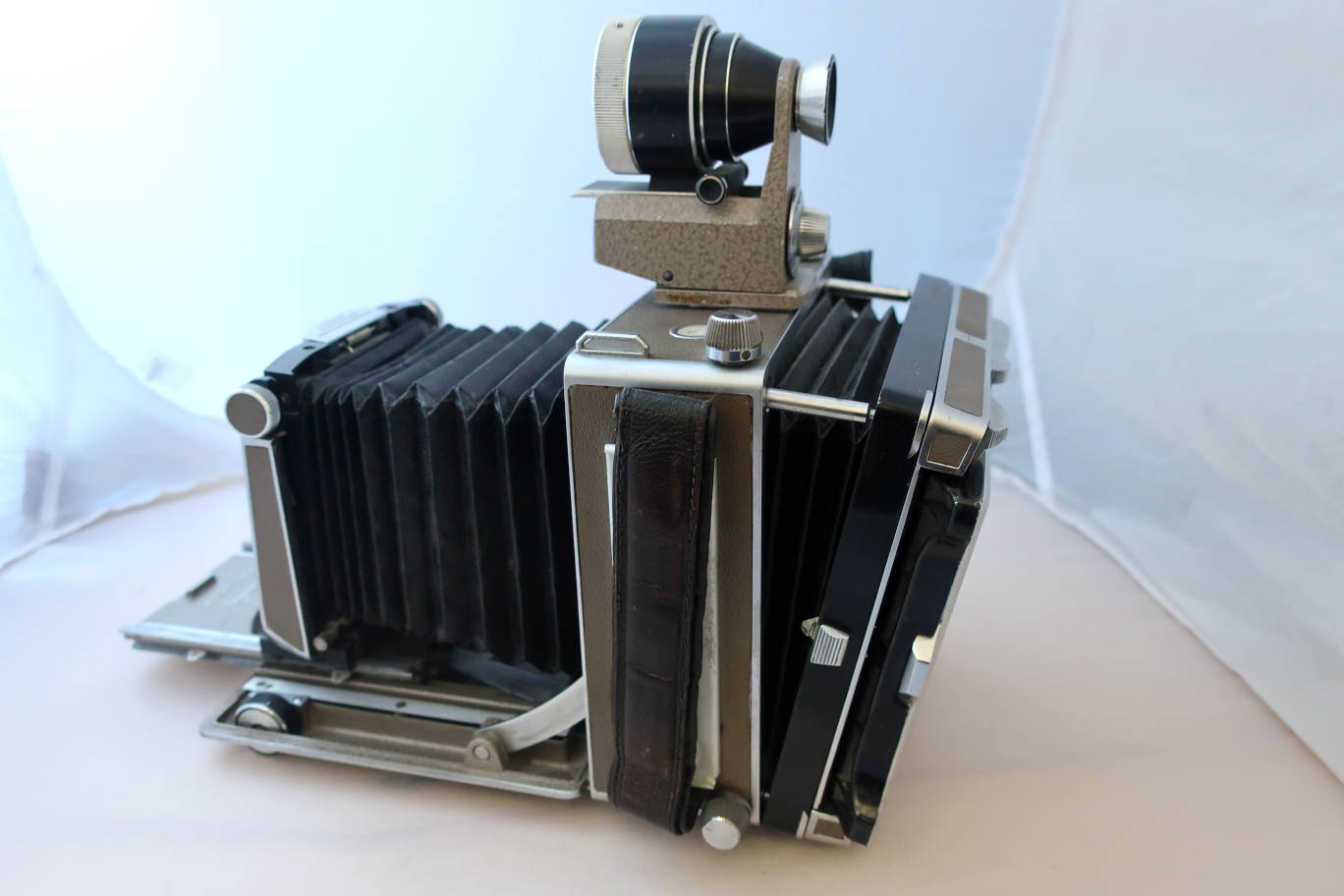
Back tilted.
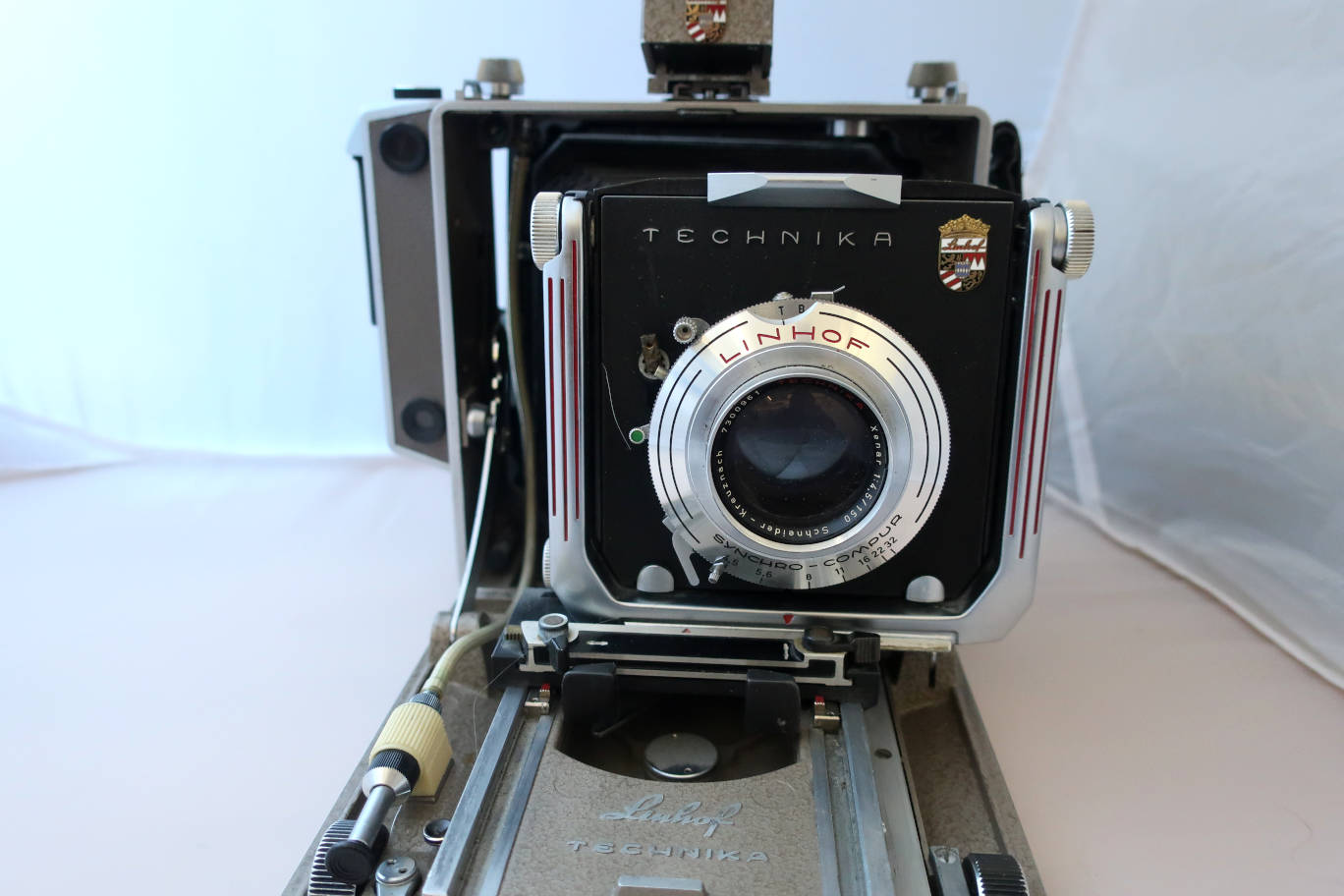
Front shift to the right...
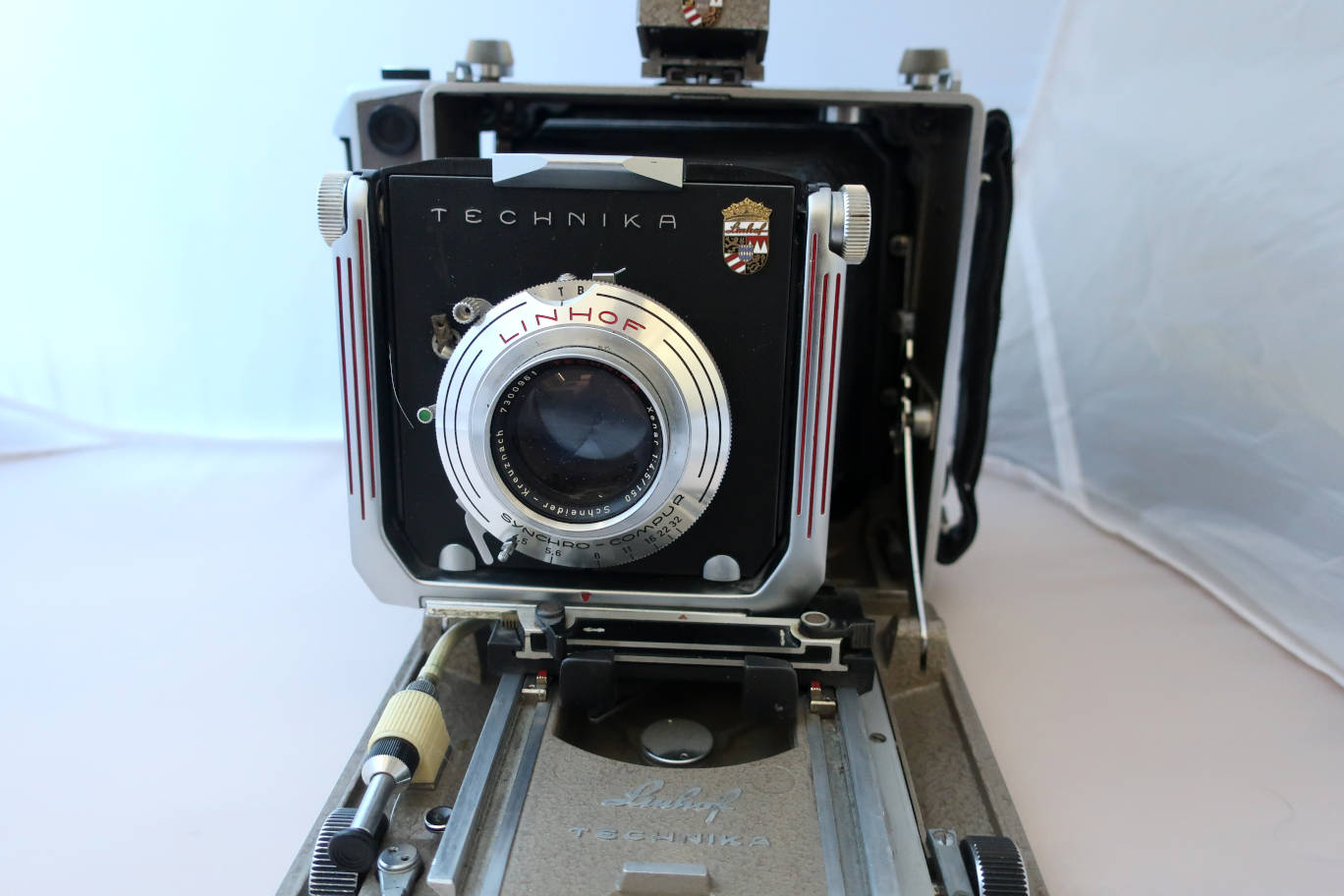
...and to the left.
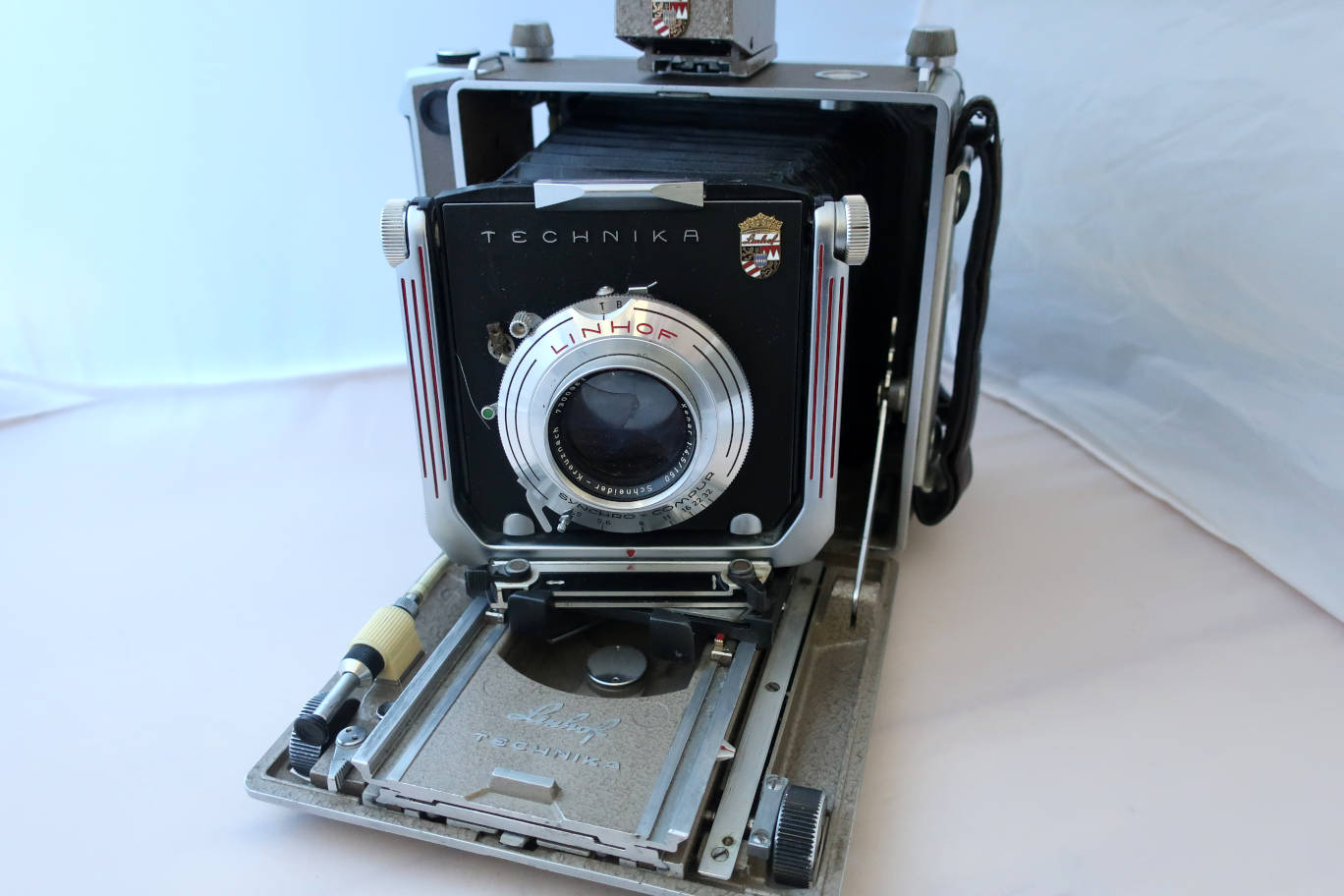
Front swing...
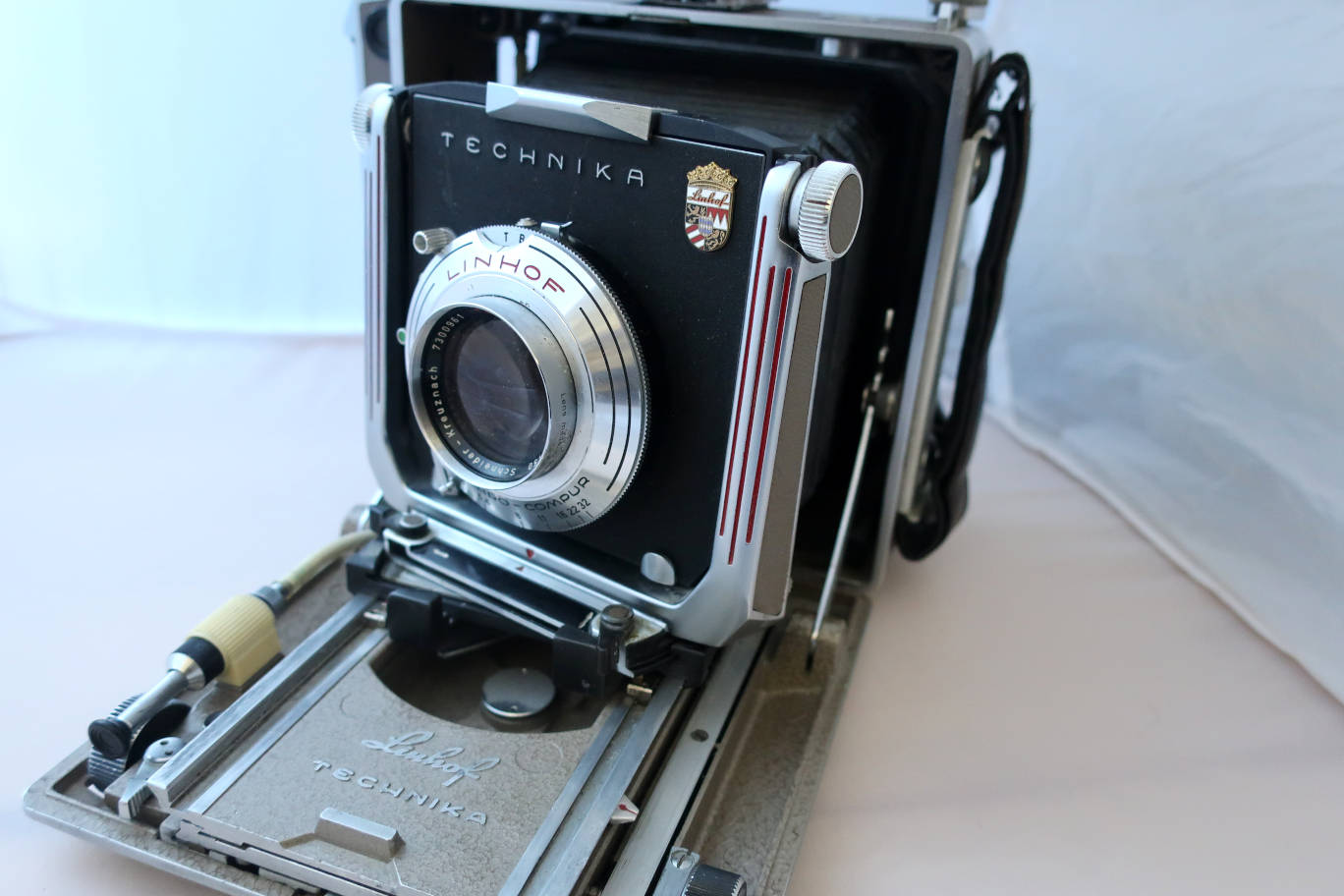
...and to the other side.
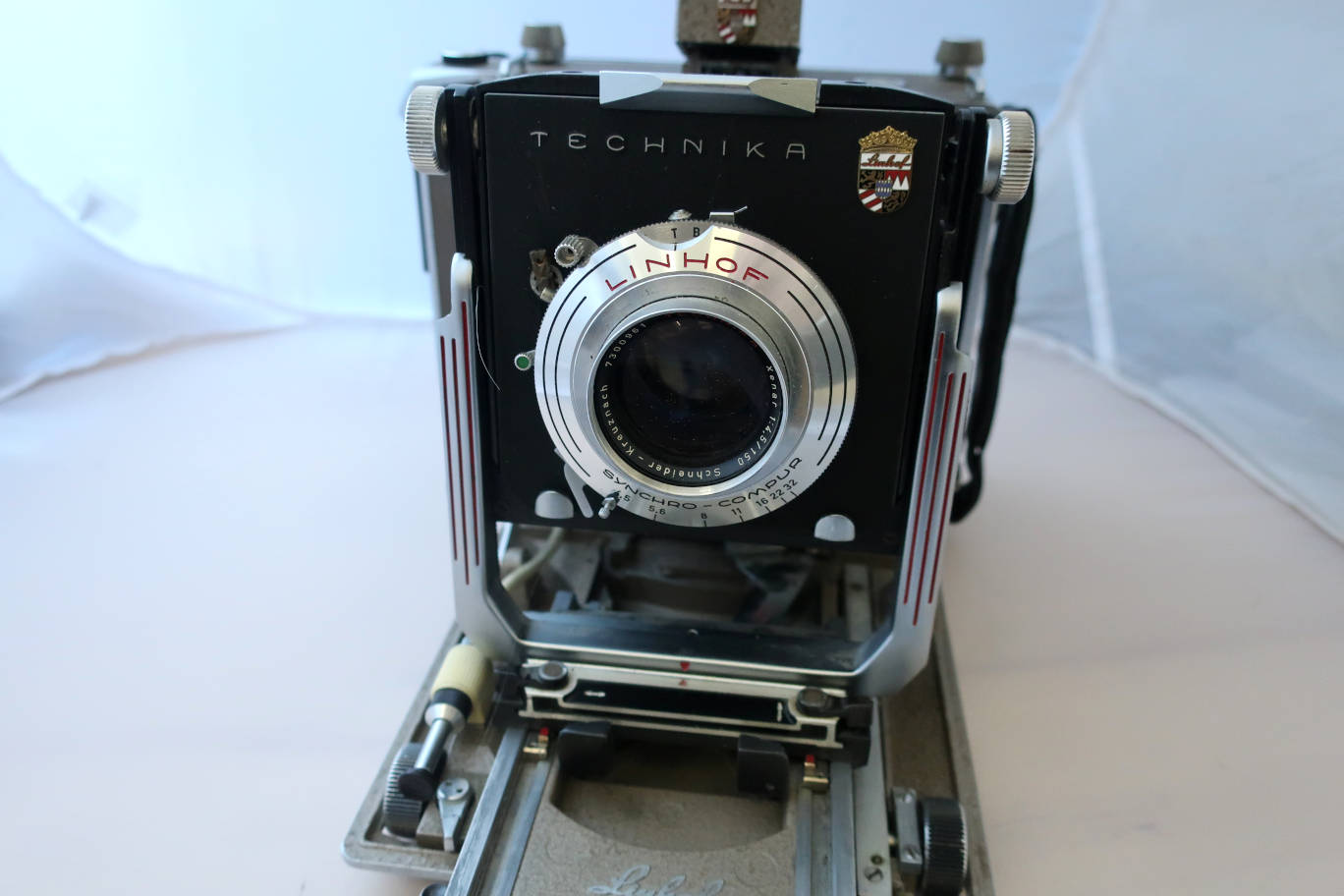
Front rise. For front fall you would have to drop the bed and then tilt.
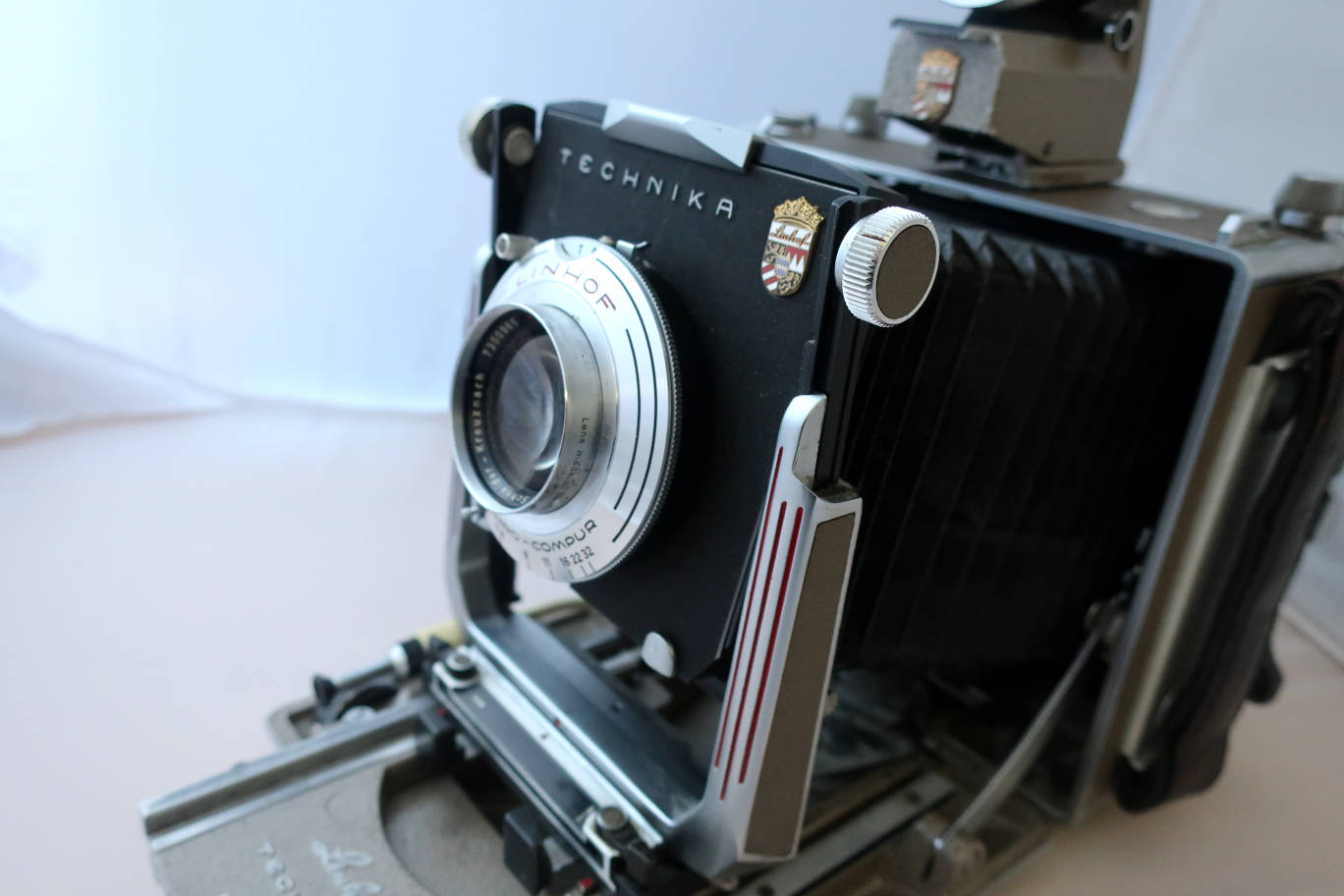
Front tilt upwards...
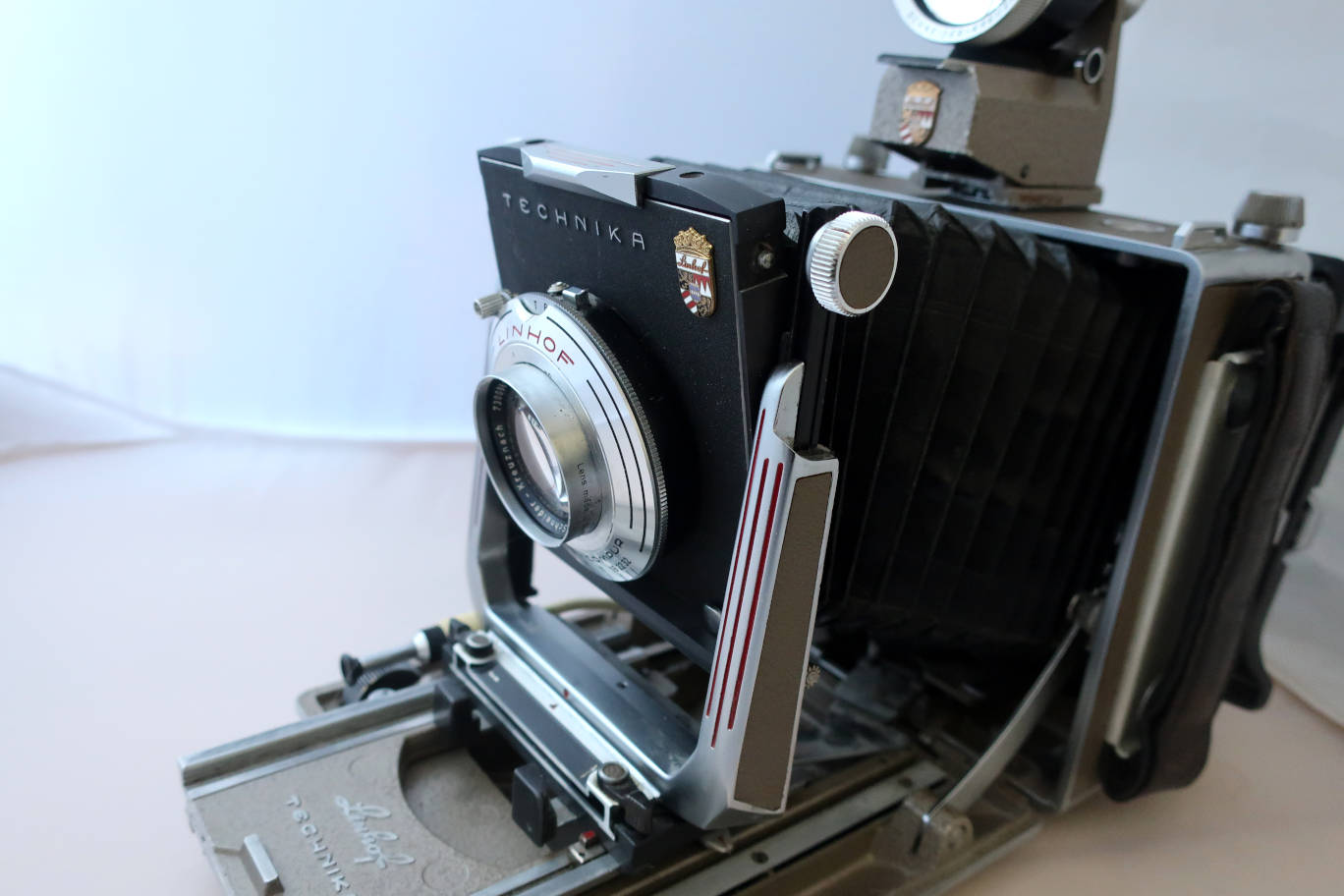
...and downwards.
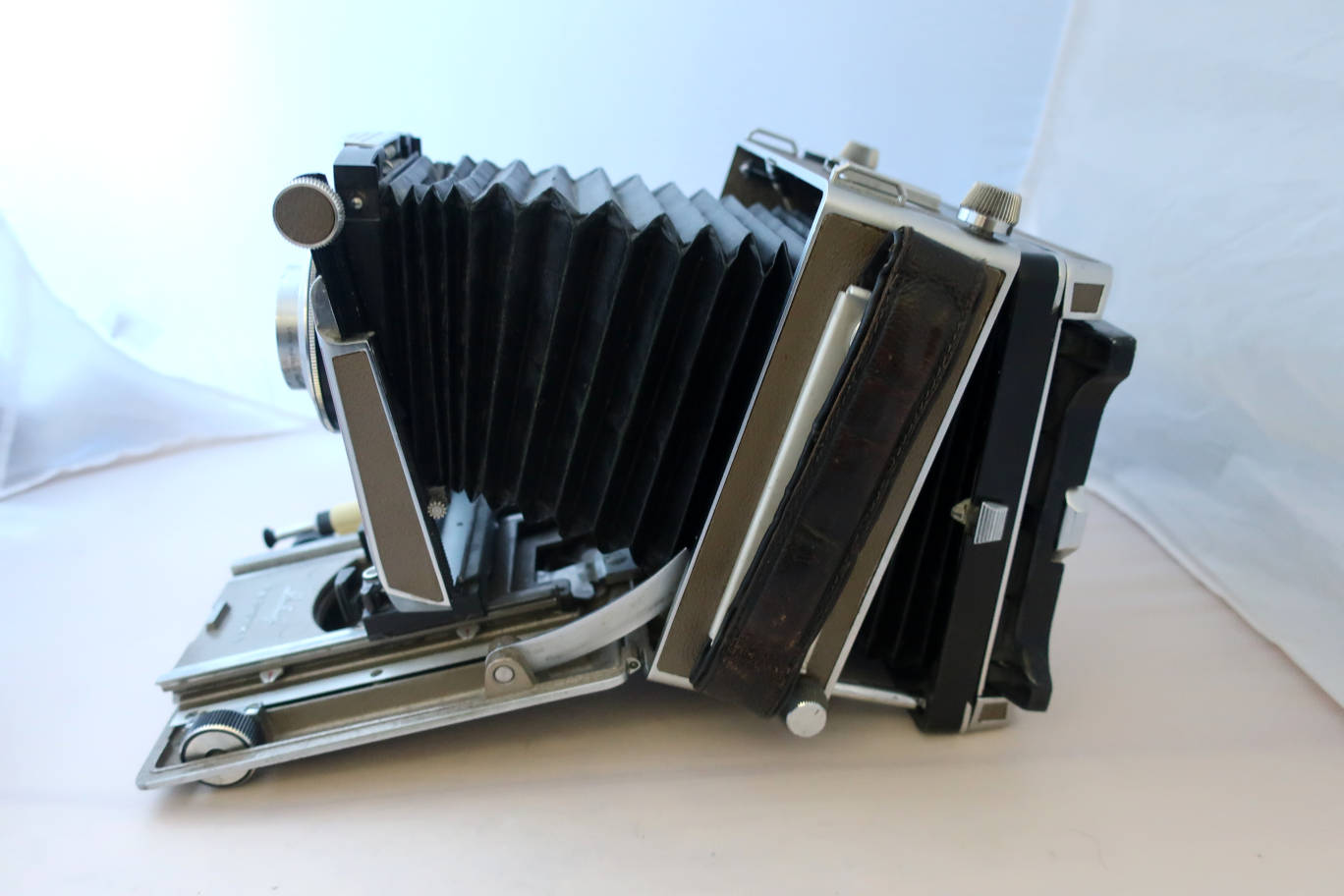
Bed dropped, front and back tilted.
Some lenses:
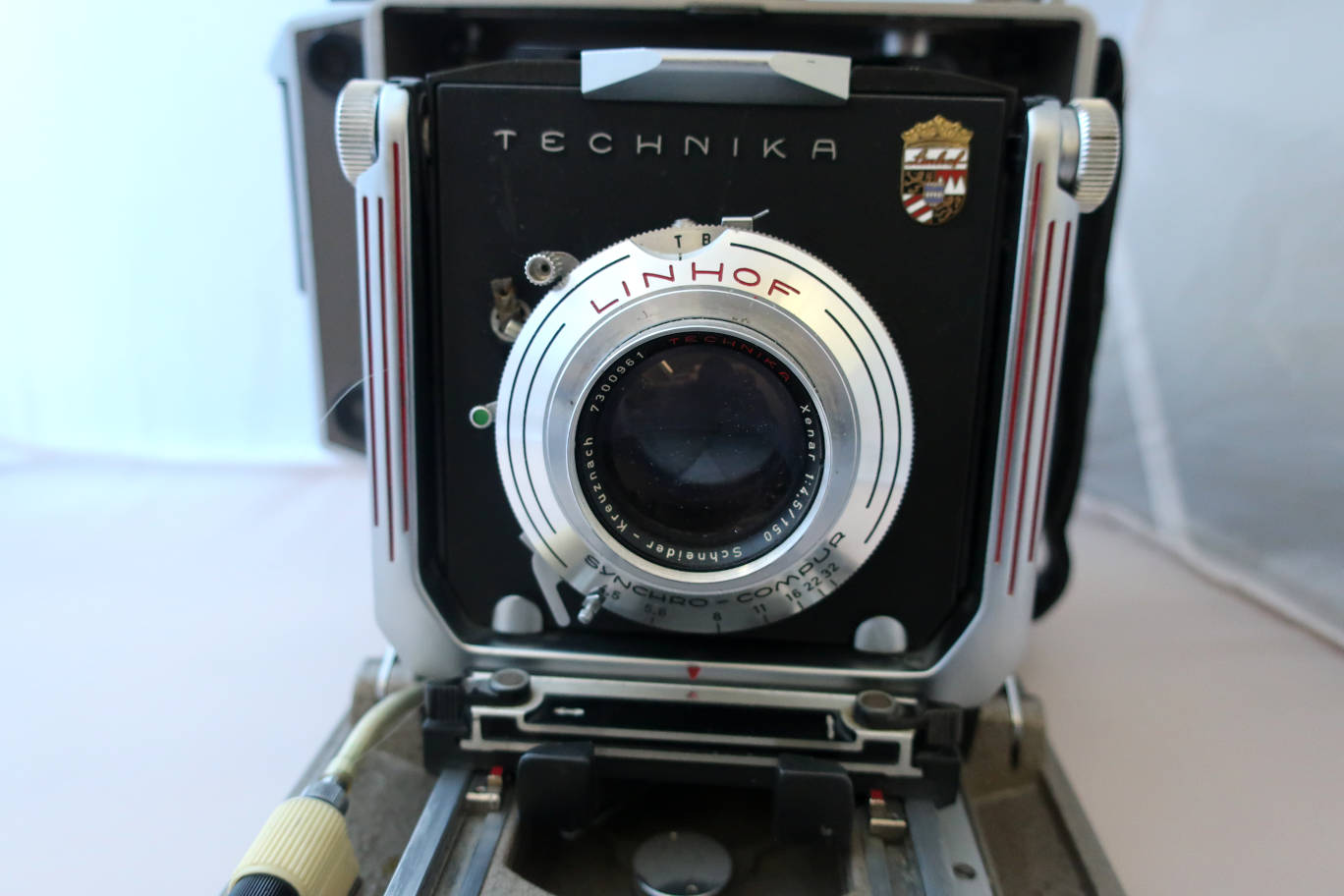
The 150mm standard Schneider Xenar lens in a Synchro-Compur shutter,
branded Linhof. The lens was made in late 1961, it matches the camera
production date.
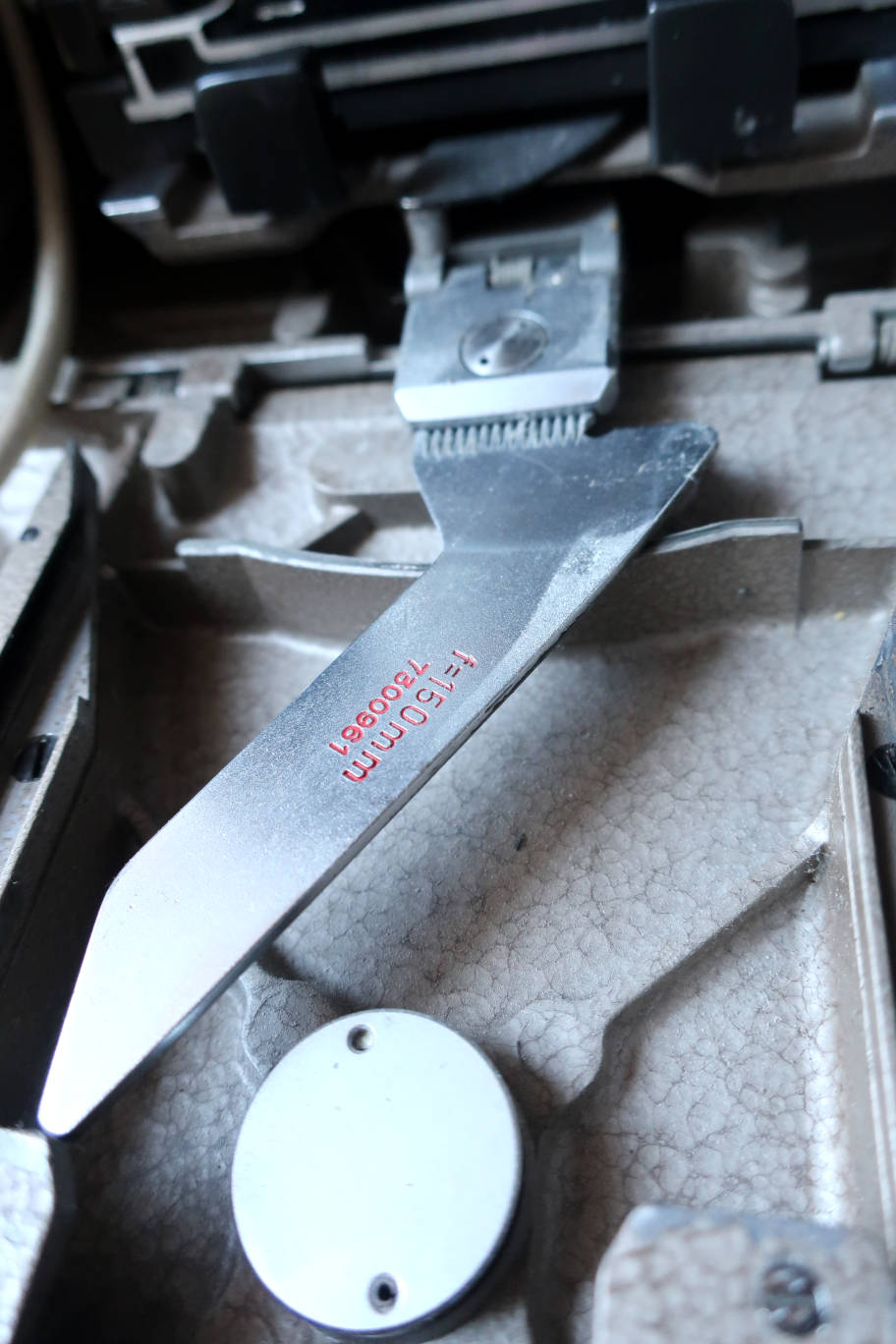
There is a matching cam in the bed, it has the lens number engraved.
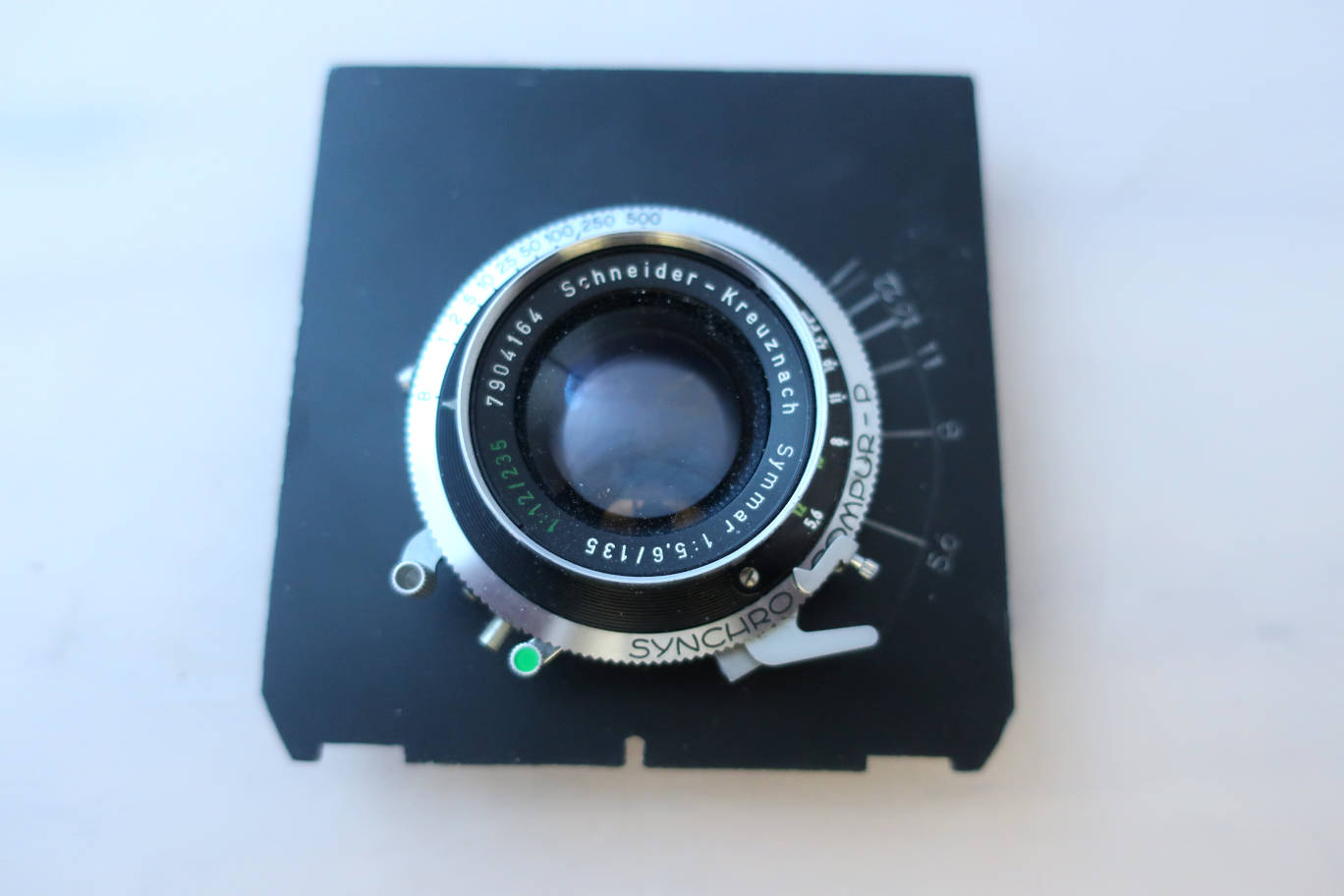
A 135mm Schneider Symmar lens. It was made in early 1963. It's a bi-focal
lens, if you unscrew the front element, the back element will give you a F
12 / 235 lens. This can save some money if you rarely use such a long
focal.
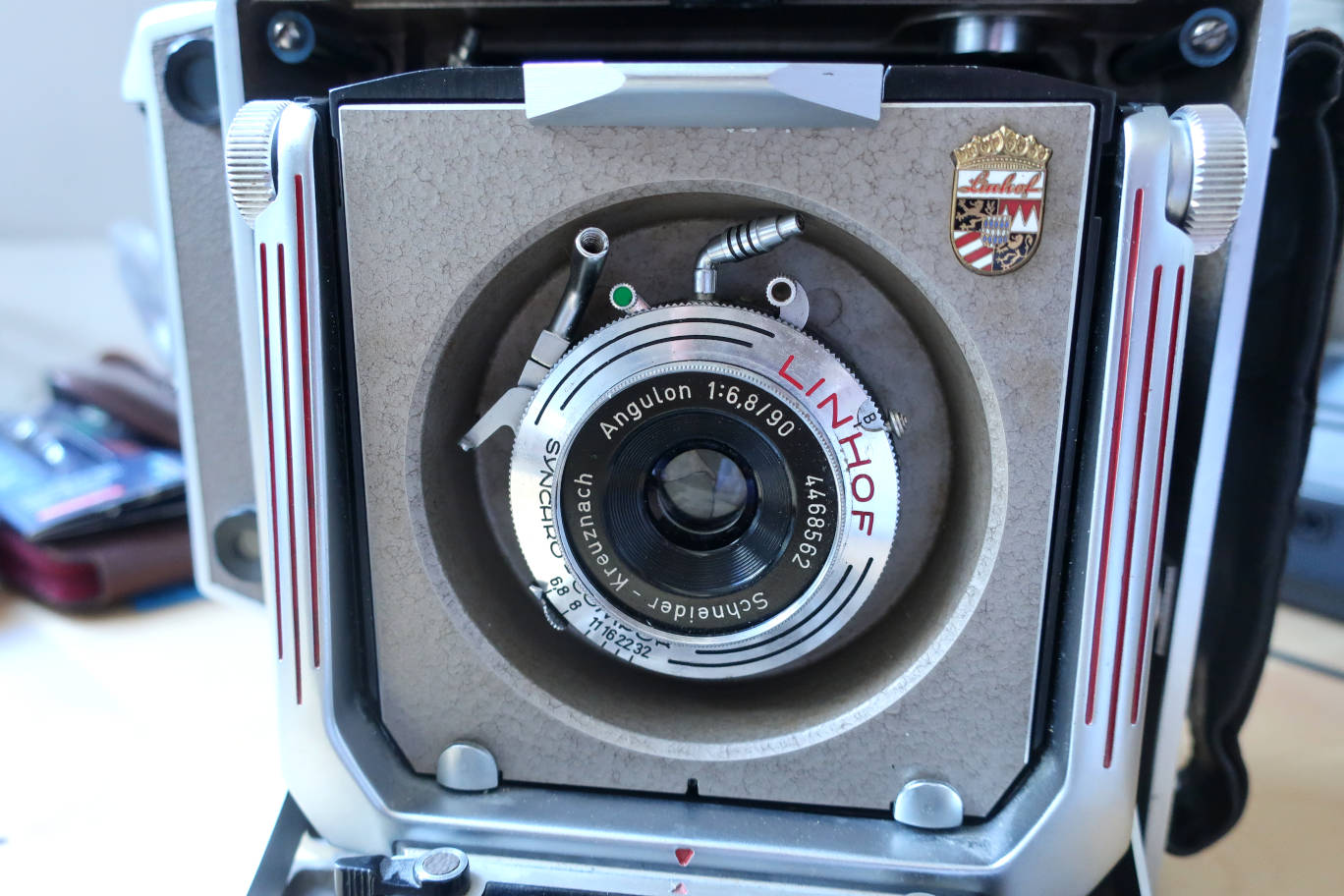
A wide angle lens, a 90mm Schneider Angulon. It sits in a recessed
lensboard, otherwise the front standard would hardly sit on the rails at
infinity. With this kind of board it's easy to focus. It was made in early
1956.
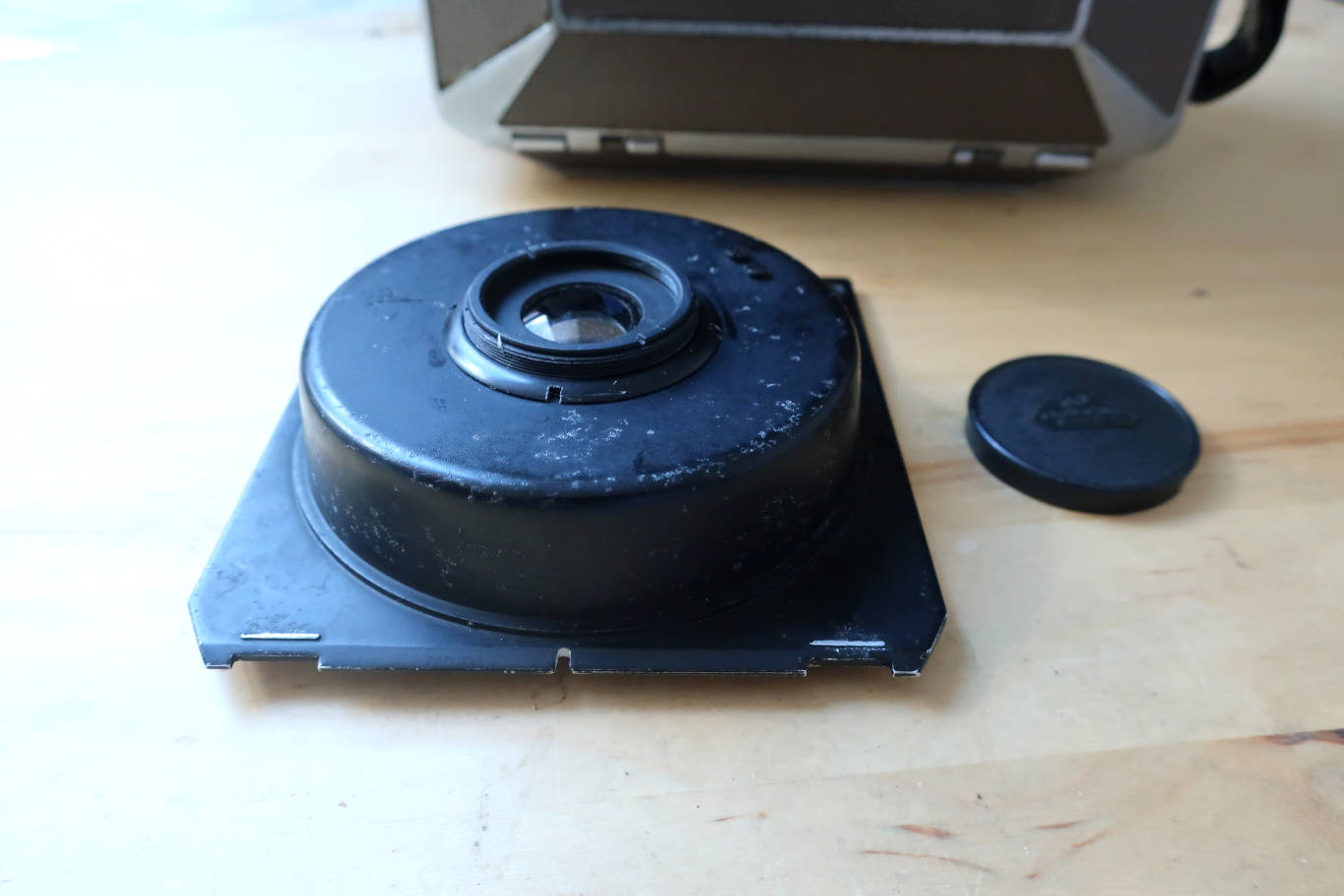
The recessment is quite important.
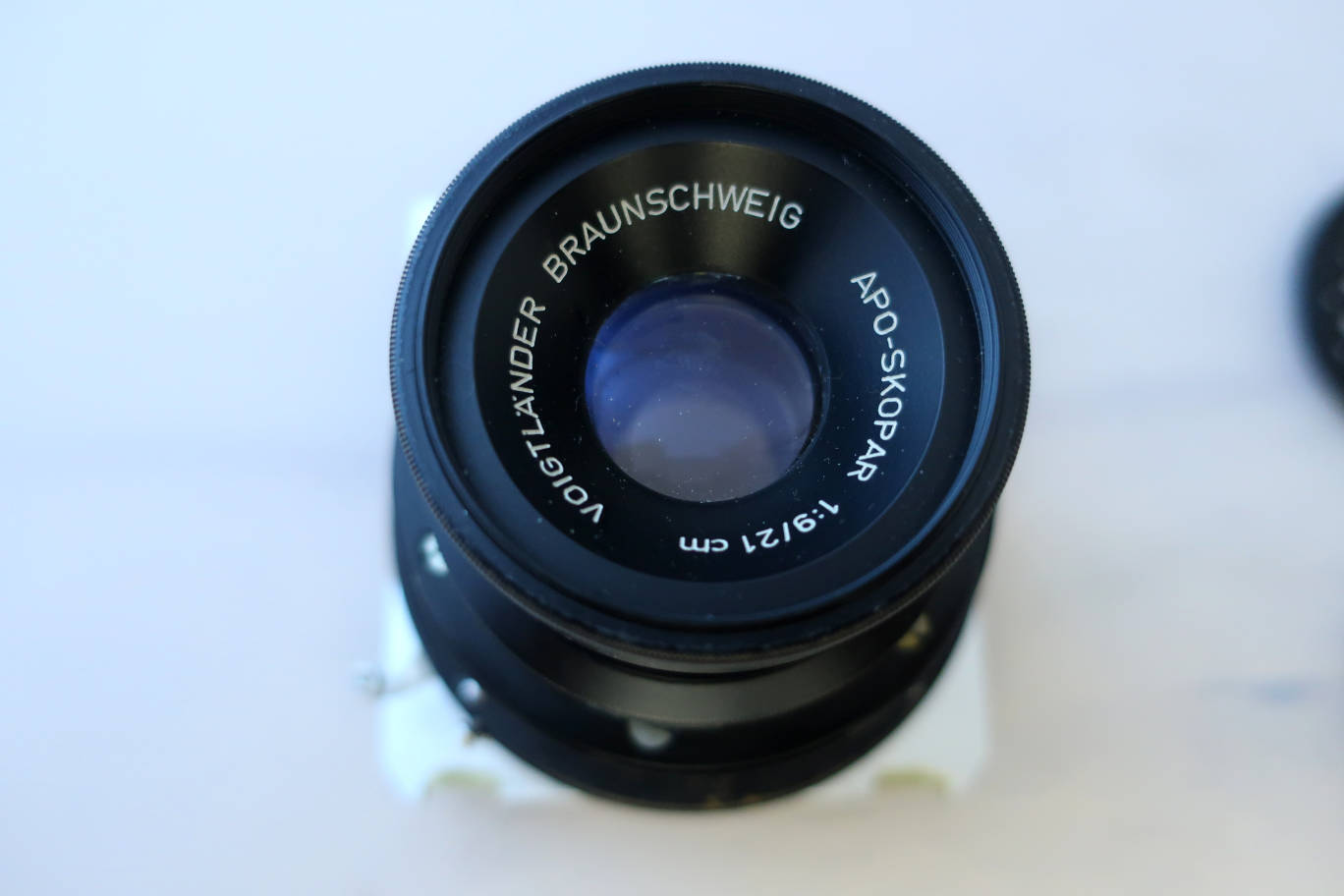
A 210mm Apo-Skopar lens. The Apo-Skopars are originally process lenses.
But their extremely good resolution already at full aperture makes them a
very good choice for landscape photography. They were sold as barrel
lenses as well as lens and shutter combinations. The choice of a Compound
III shutter seems a bit strange, they would have fitted into a Compur 1.
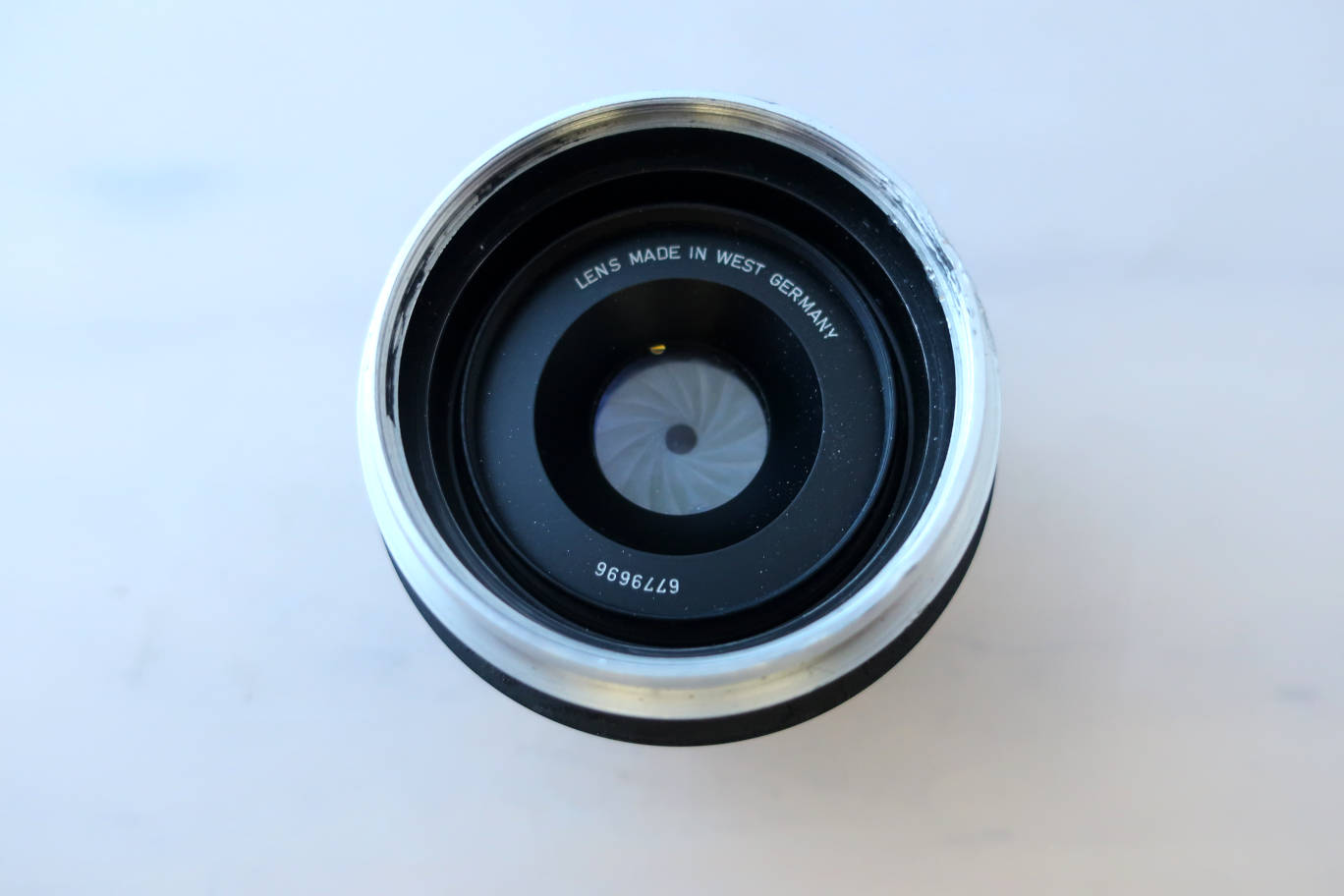 Seen from the back. The
serial number is from 1965. It has a beautiful built-in multiblade iris.
Seen from the back. The
serial number is from 1965. It has a beautiful built-in multiblade iris.
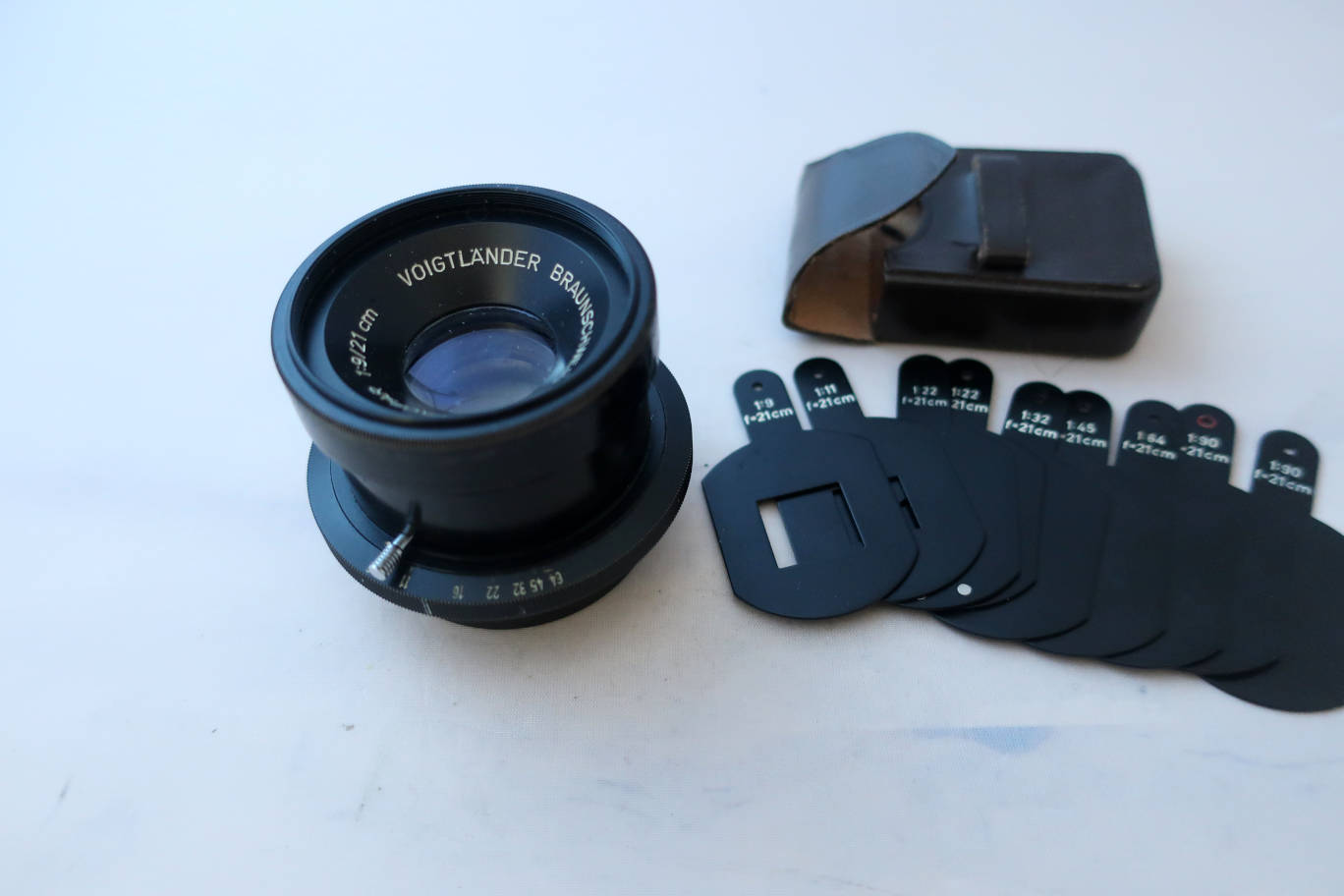
Although the lens has a built-in iris, it comes with a set of aperture
inserts.
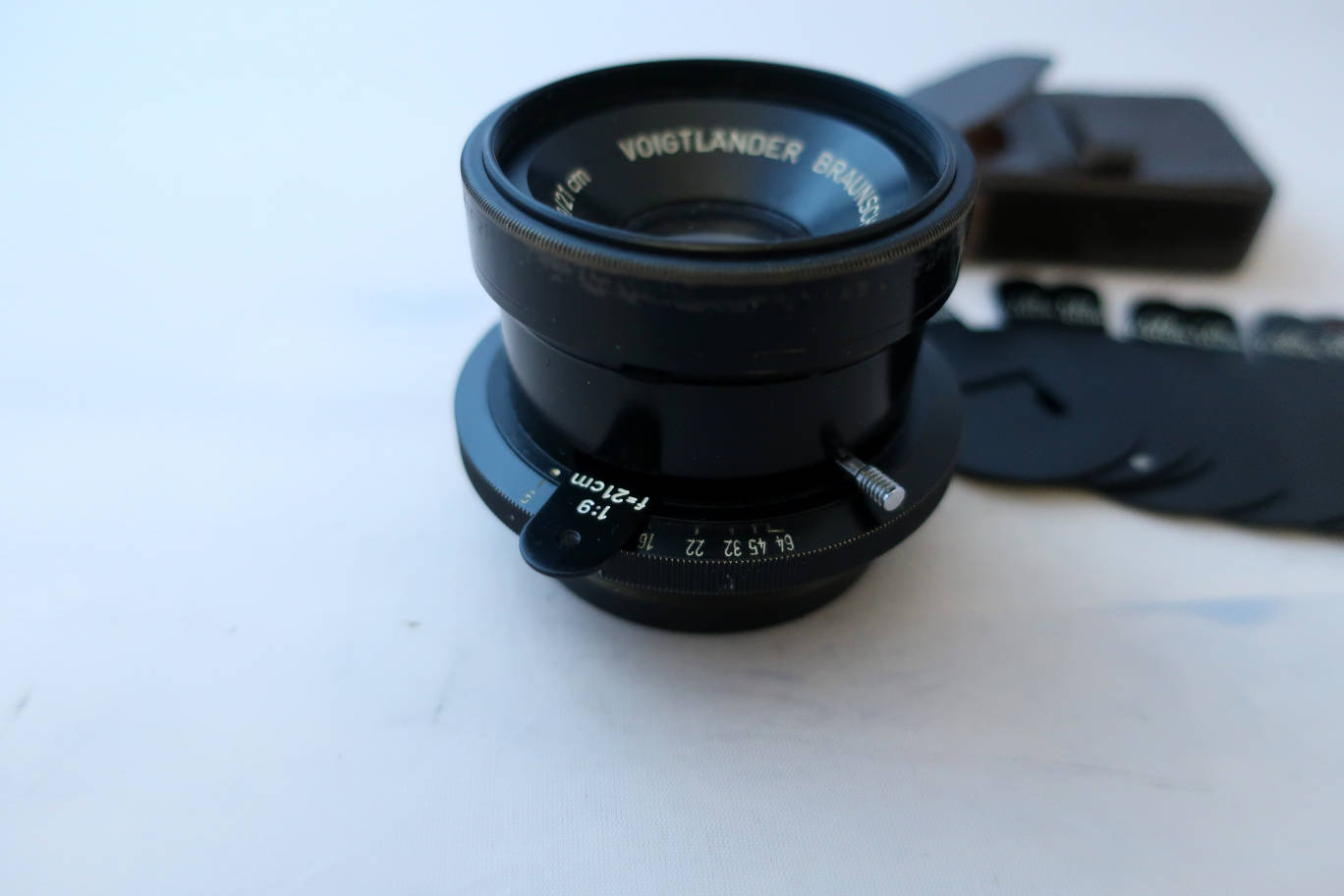
There is a slit for the aperture inserts that can otherwise be closed.
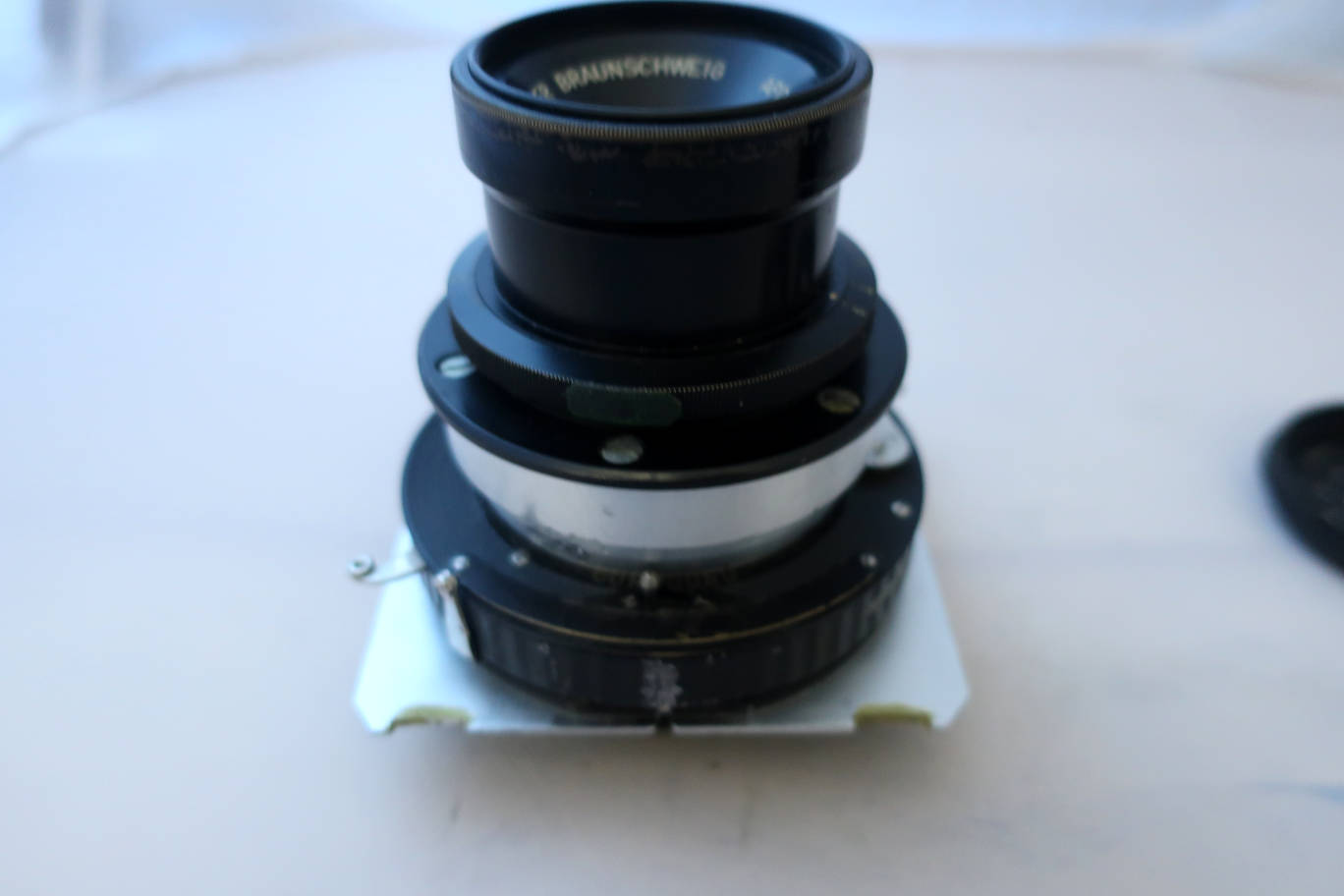
This is obviously a customized construction. As the camera already has a
Compound III shutter coming with the Imagon lens, the Apo-Skopar was
adapted to this shutter. You unscrew the Imagon lens on the back and it's
ready.
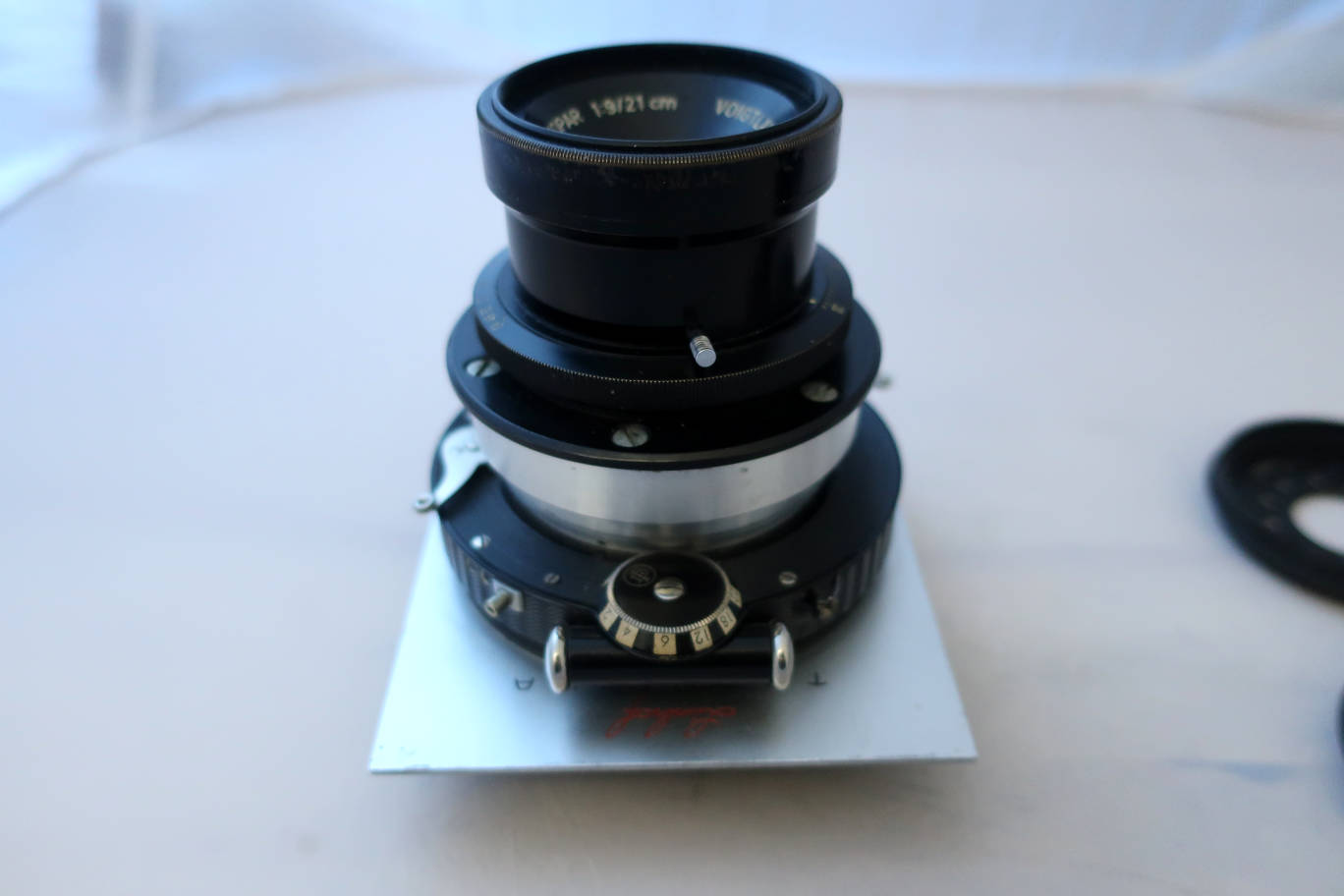
Seen from above.
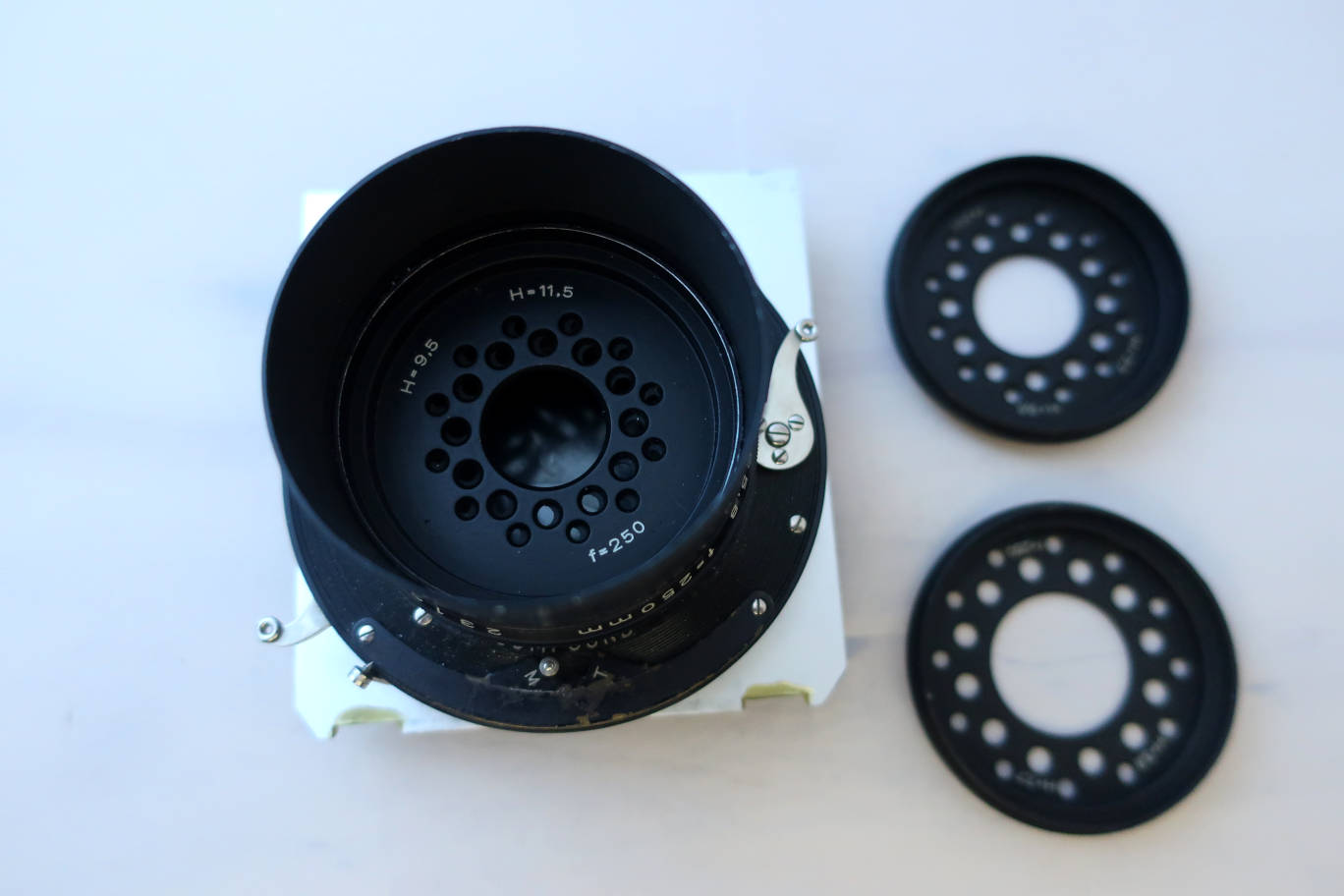
A 250mm.Rodenstock Imagon soft focus lens. It's a special purpose lens,
not easy to manage. It comes in a big Compound III shutter, a 2-element
lens sits behind the shutter. In front of the shutter there are 3
different aperture disks with variable "sieve" holes in them, which
produce a perfectly controllable halo around the lights and a softness
towards the borders.
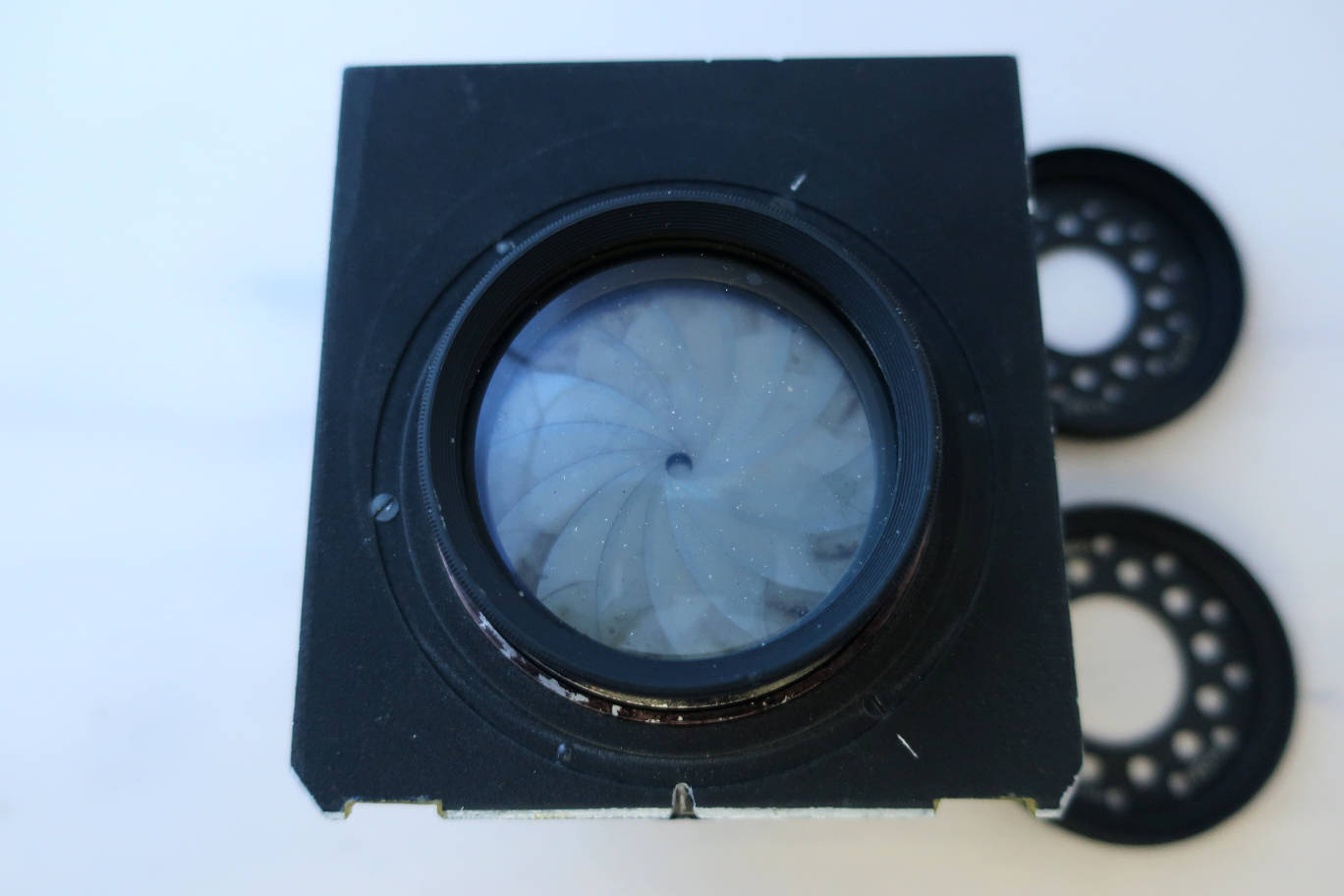
The lens itself sits at the back of the shutter. It has a multiblade iris
in case that you want to use it as an ordinary lens.
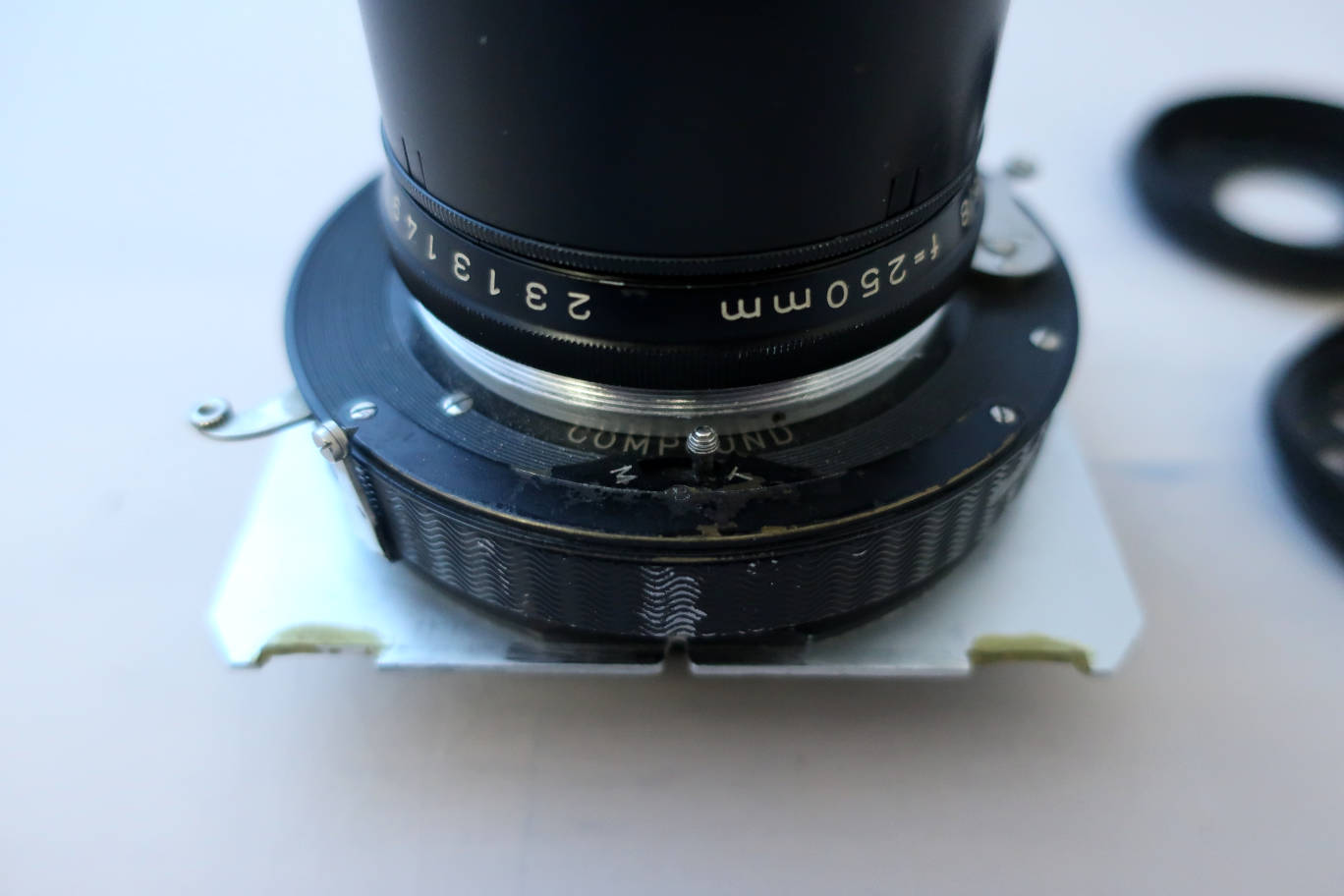
The shutter has a M setting for the speeds, a T setting and in between a B
setting, the paint for the B has come off. Even in the 1990s catalogues
the lens was still delivered with this old Compound shutter.
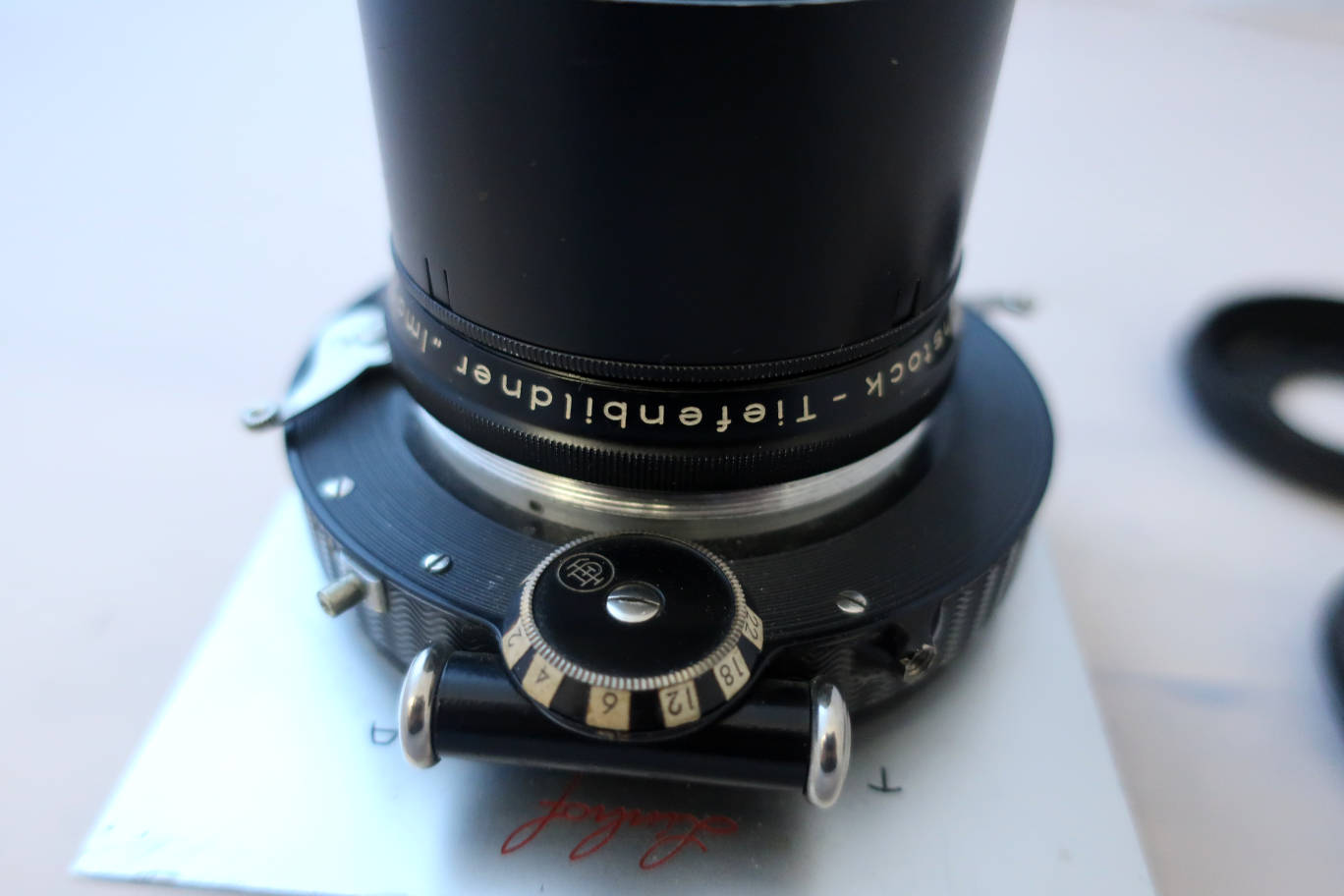
A strange shutter numbering, it goes from 1 to 45, 1 being the longest
speed. These are paper labels. I peeled off the 45 to see and there was
still nothing visible. I asked on a large format forum and a member told
me that there are versions with extremely small and faint numbers. So I
cleaned all residue and there it was:
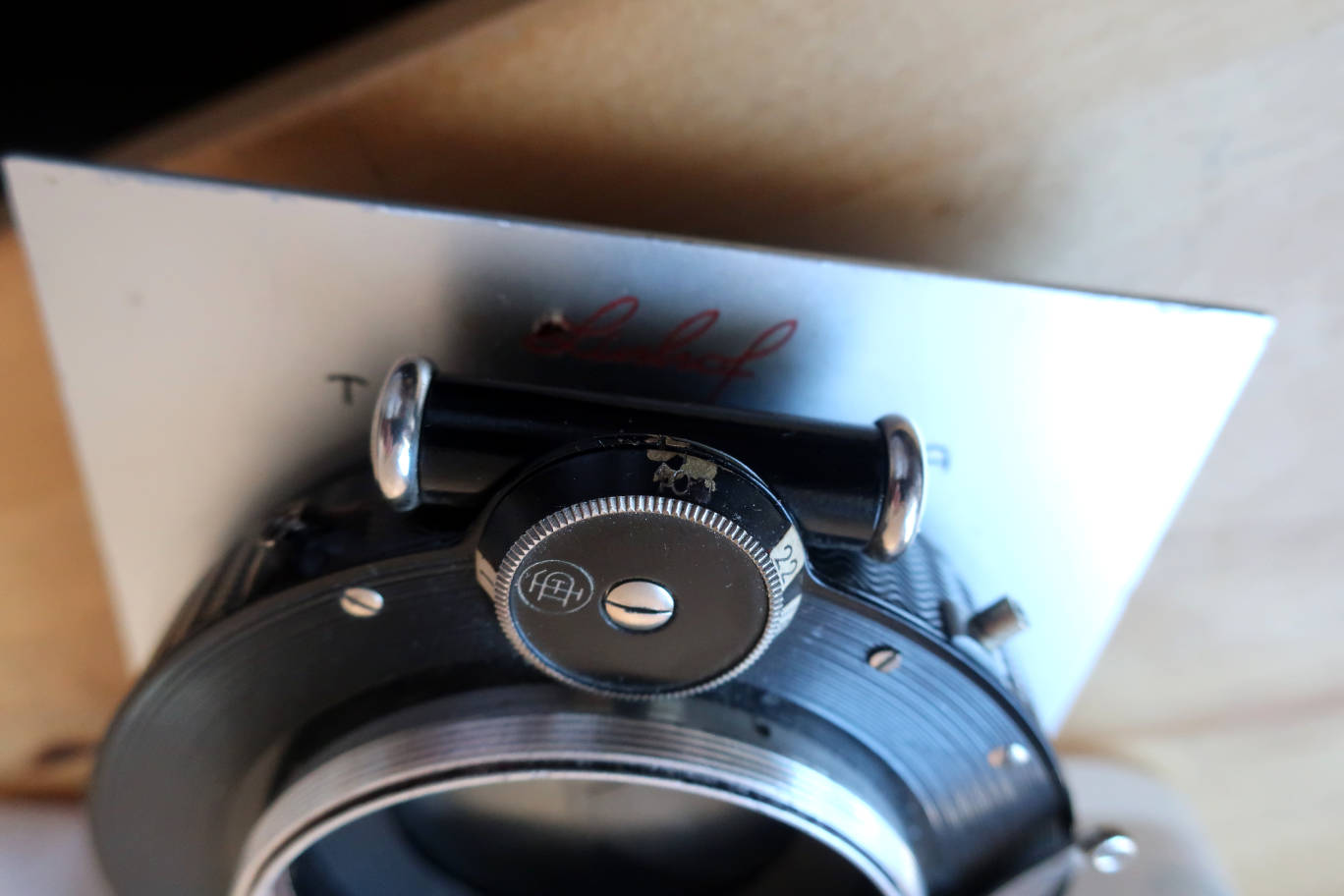
a faint hint of a "100" speed.

Further cleaning and a bit of black permanent marker shows it a bit
better. Comparing other pictures on the web tells my that the other
numbers would be 75, 50, 25, 10, 5 and 1 second. Why this shutter has this
strange numbering, I don't know. I will leave it there for the moment. But
it's still a mystery for me...
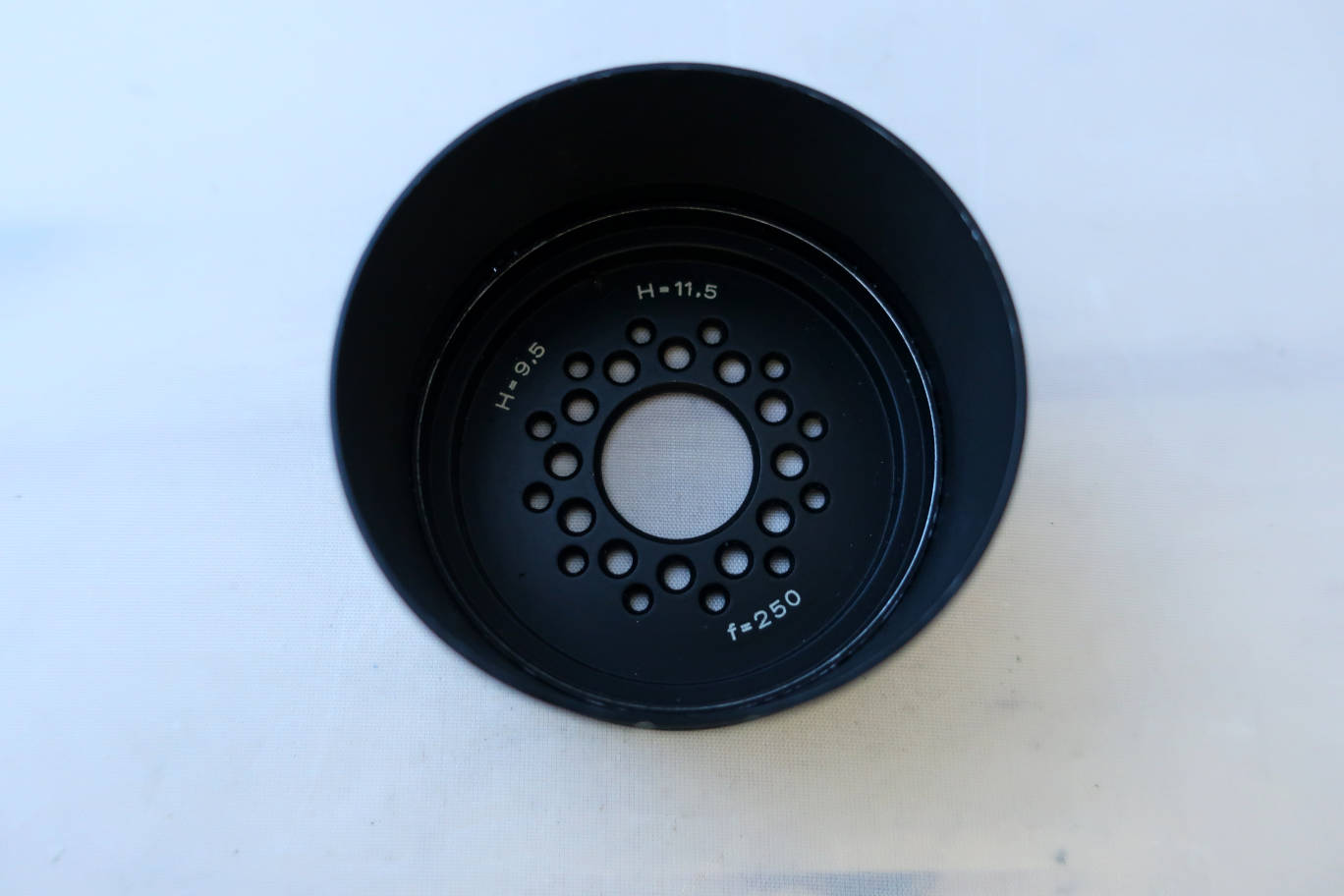
Smallest aperture, from F 9.5 to 11.5.
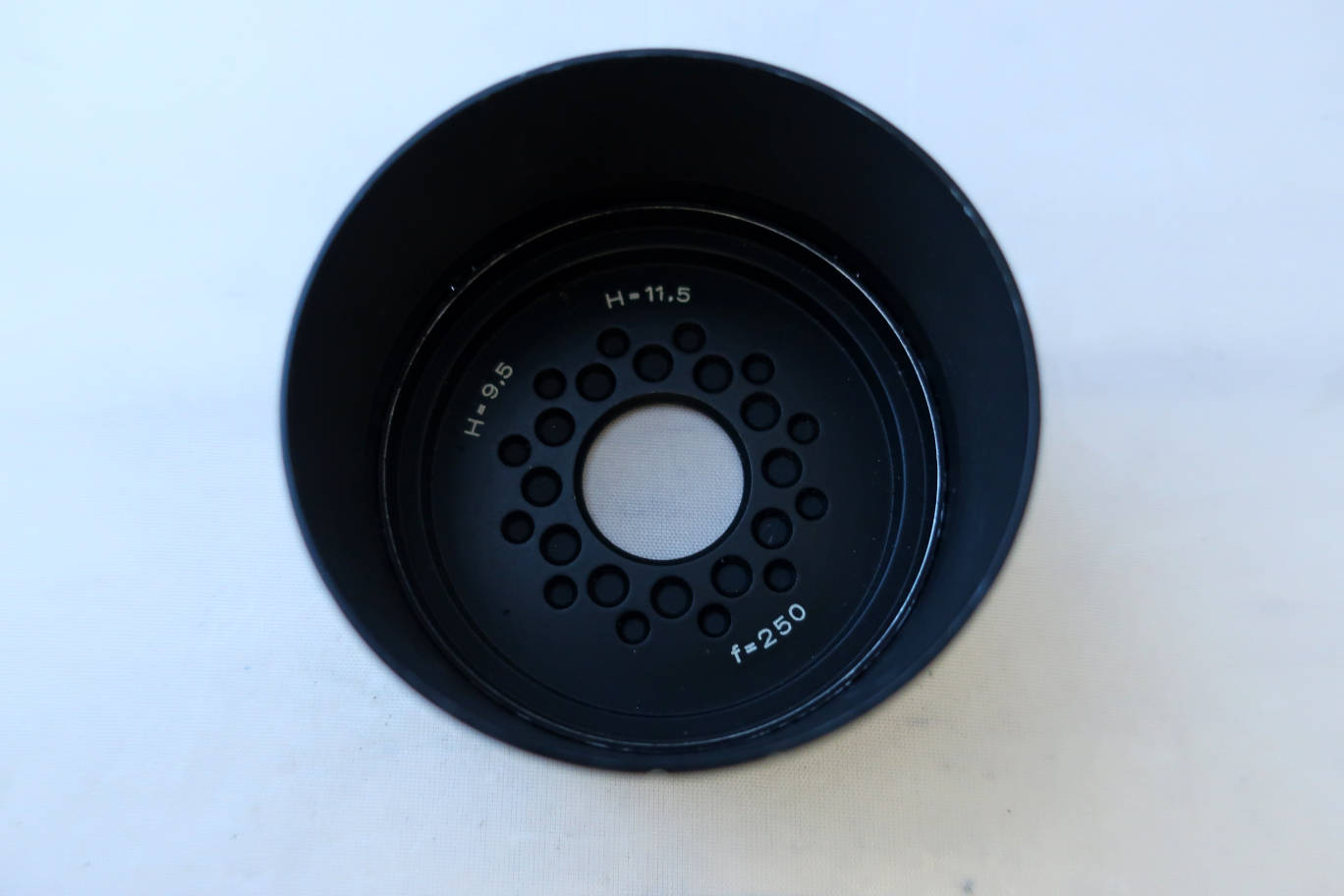
Holes closed.
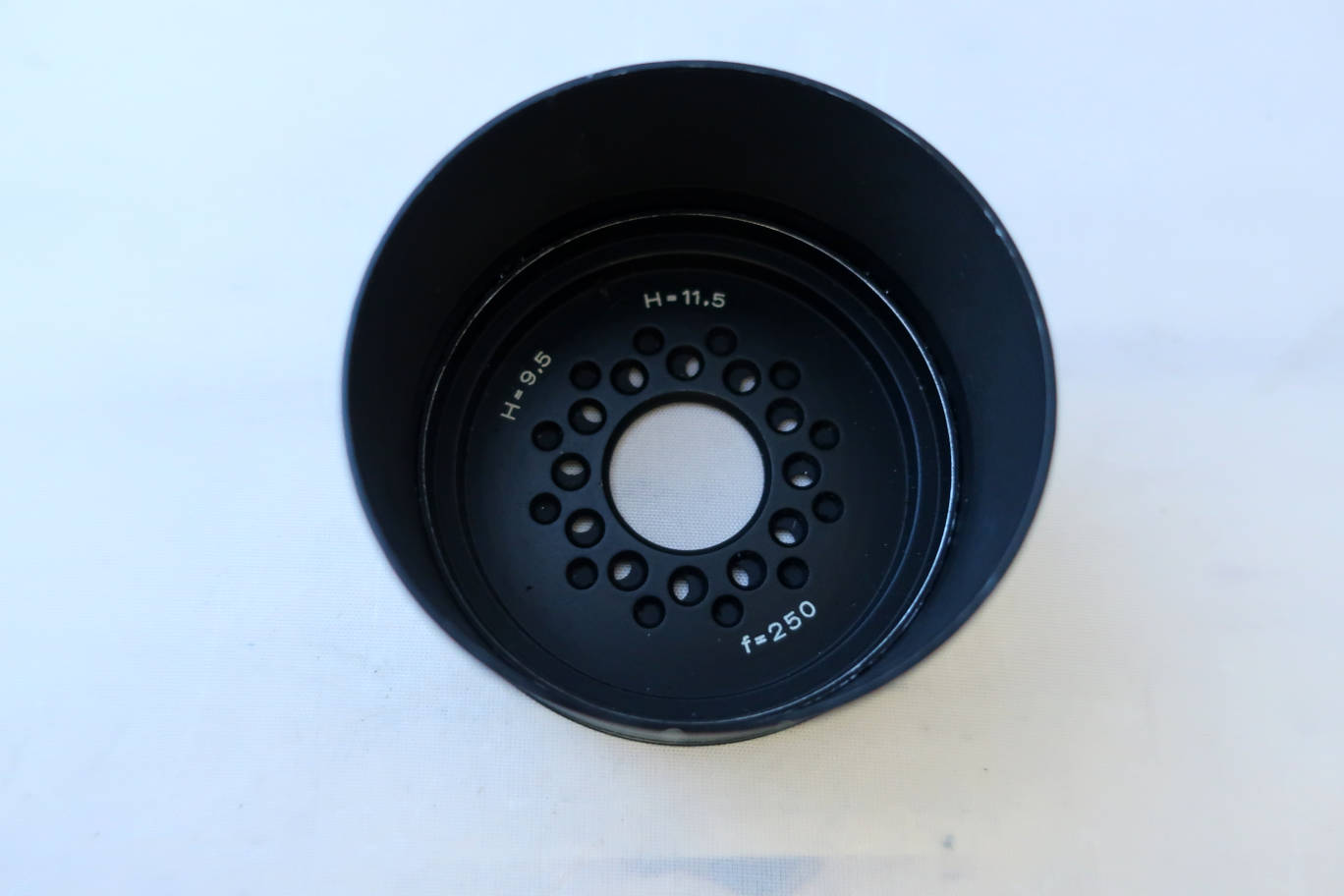
Intermediate positions are possible.
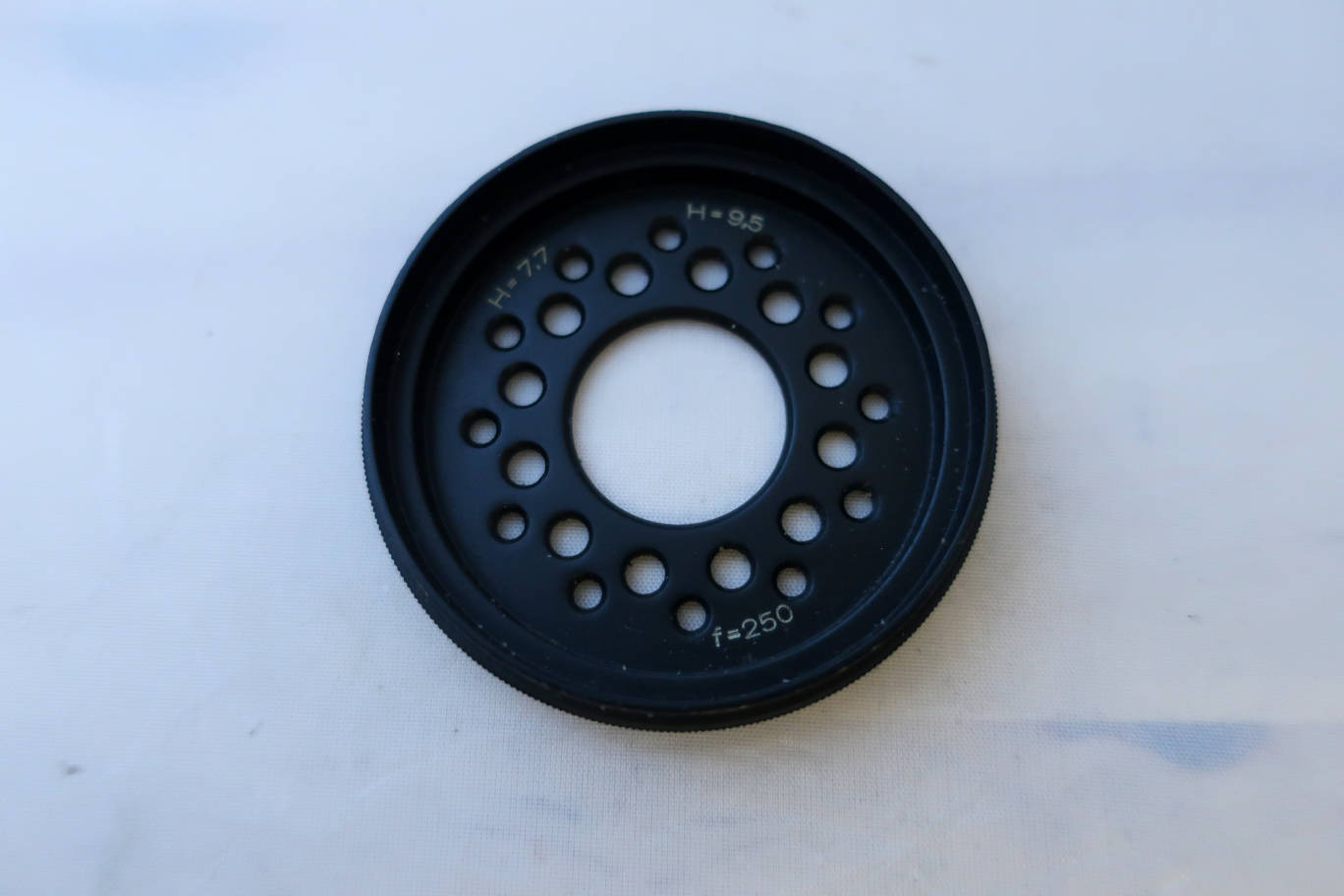
Medium aperture, F 7.7 to F 9.5.
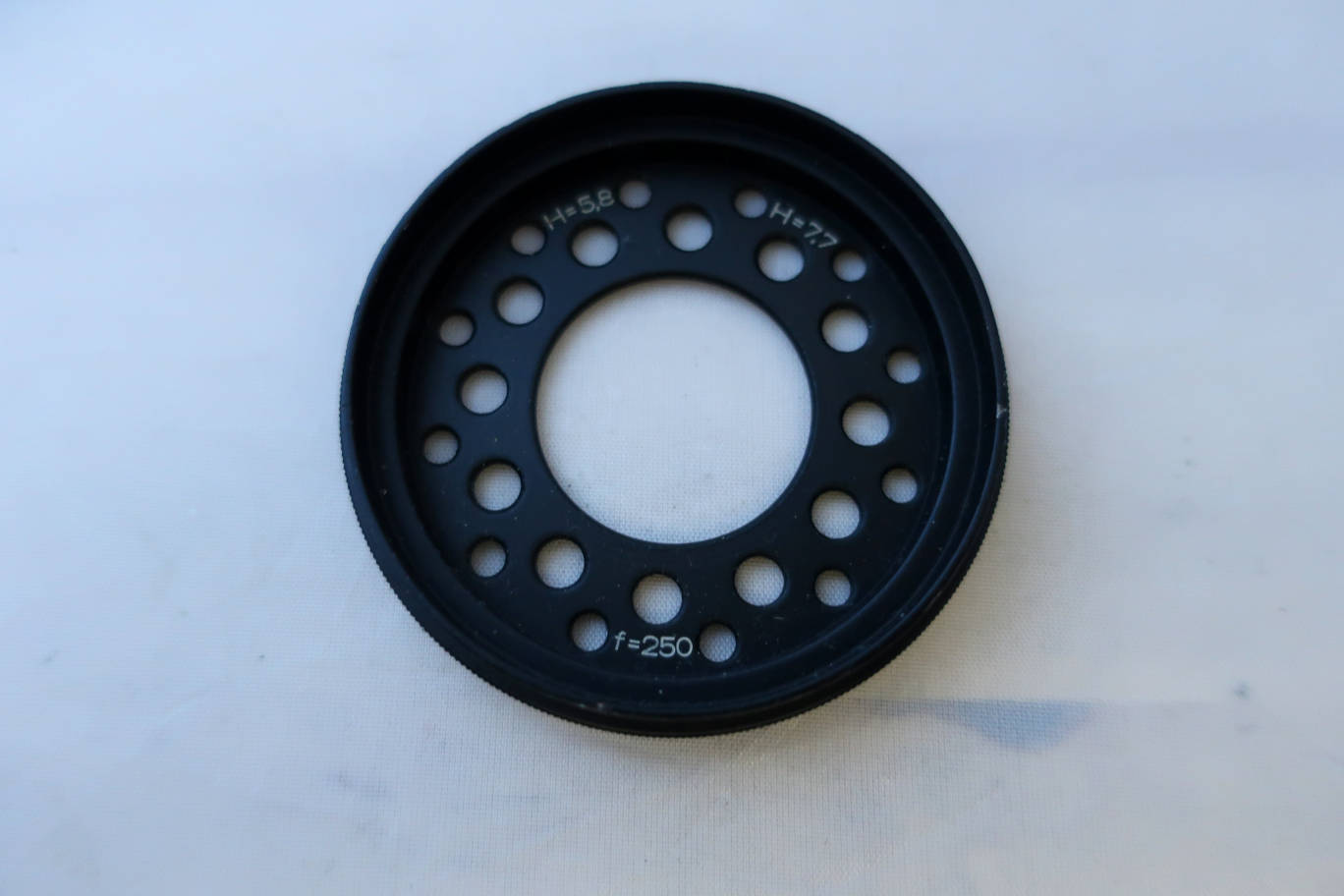
Biggest aperture, F 5.8 to 7.7. In the old days of b&w photography
there was a 4x green filter with the set, the halo effect is more
pronouced at wide apertures. So you could stop down exposure via the
filter. Later there was a 4x gray filter. you can attach any variable
density filter to the set instead.
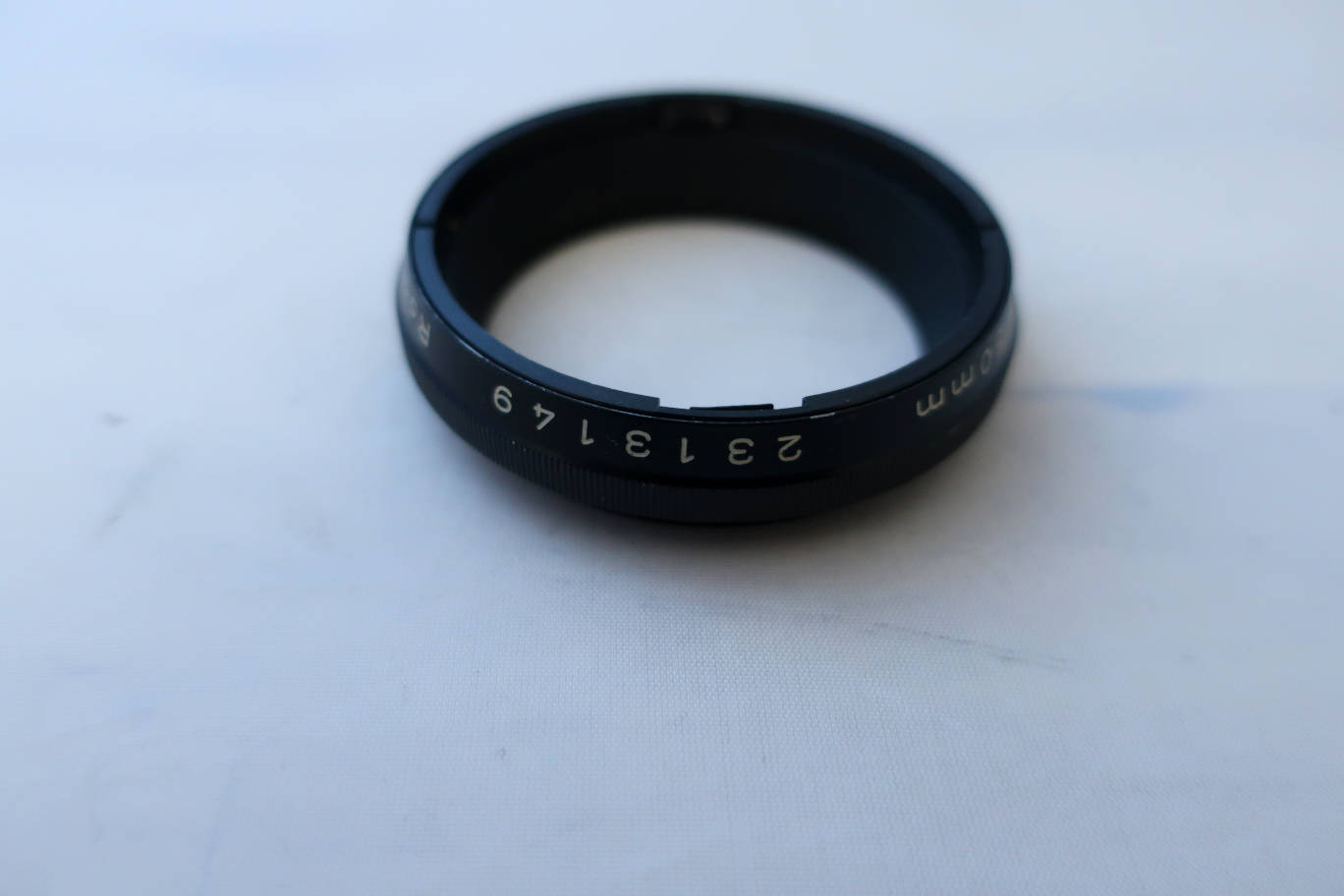
The serial number makes it a lens from about 1950.
The special Linhof multi viewer or finder:
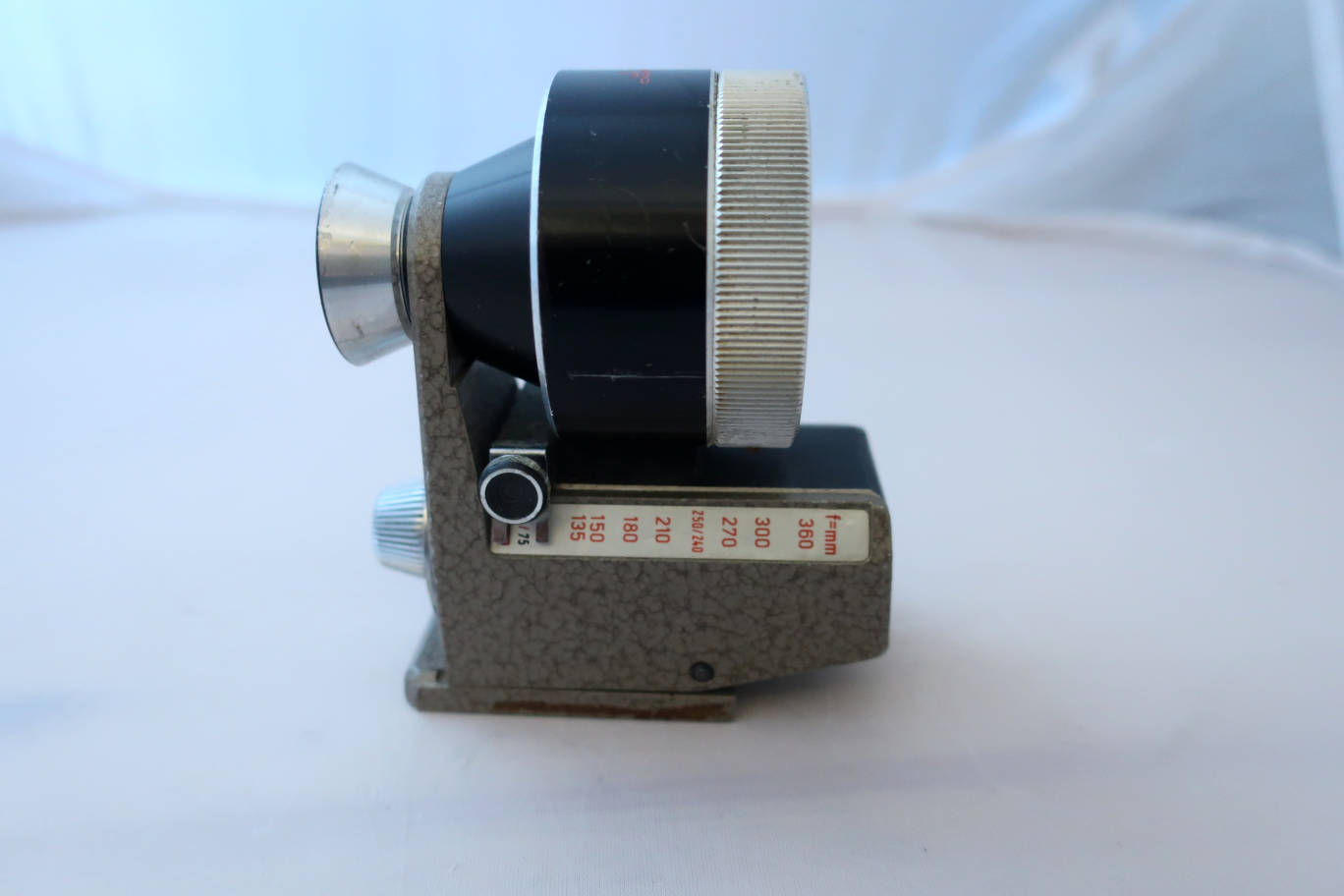
Set to 75/90mm.
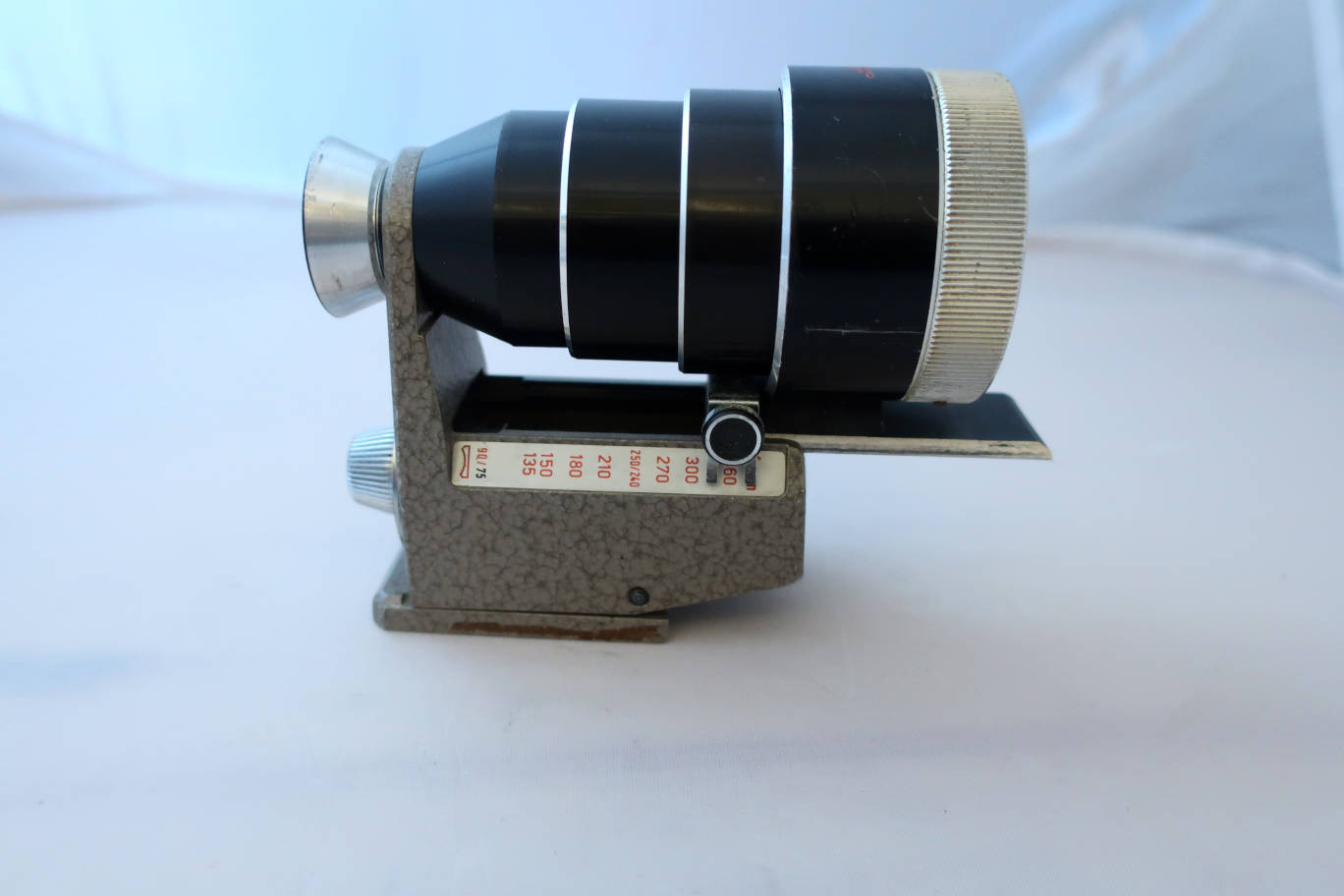
Set to 300mm.
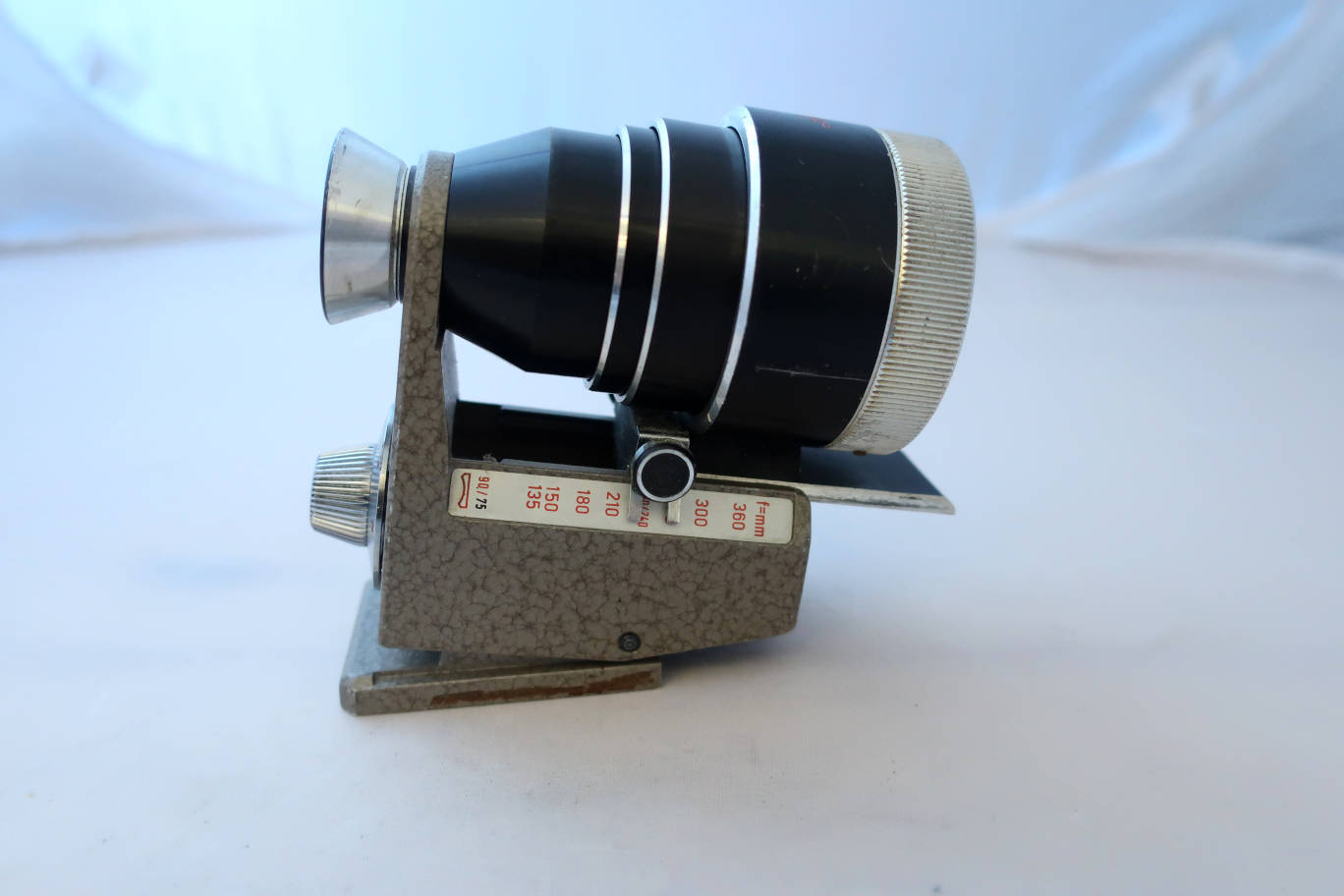
The focal length setting has to be done at infinity setting. Closer
focussing moves the lens out, so does the finder.
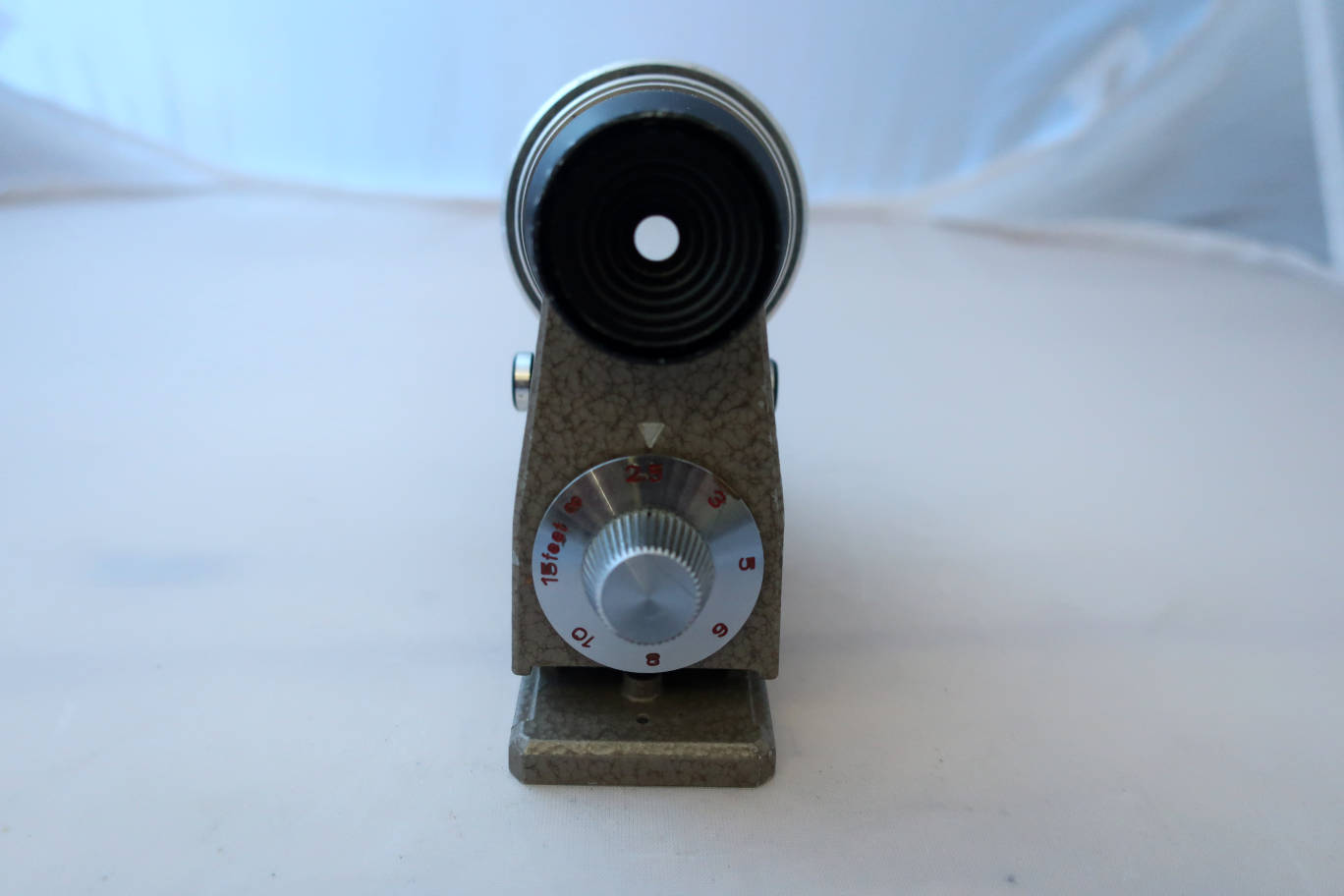
This is a non-metric finder, set to 2.5 feet.
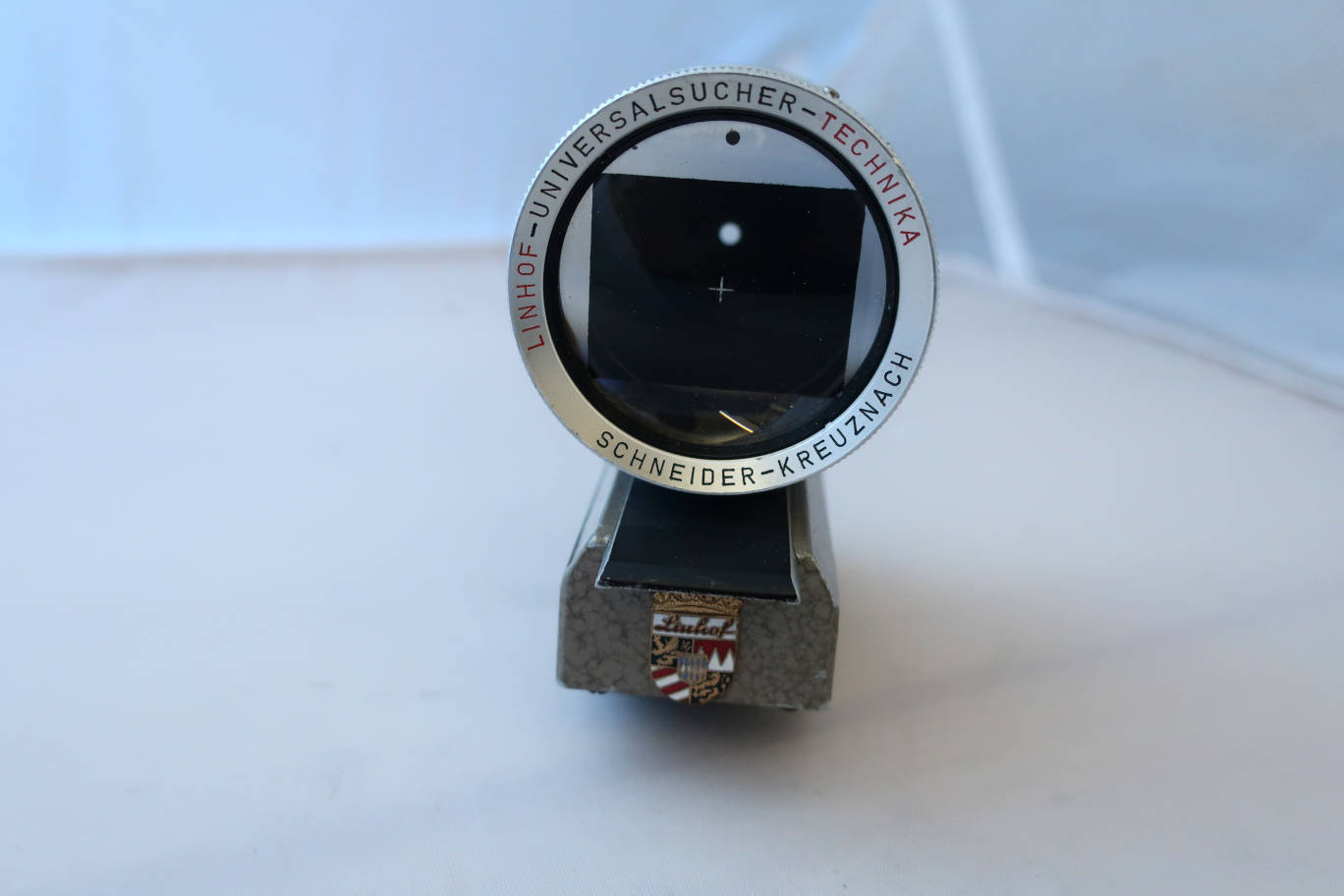
The front. The mask can be turned from landscape to portrait format.
It's a very nice camera,
easy to use. It is built like a tank, very ridgid. The rangefinder is only
a help if you have the matching cam. The choice of movements is huge.
Accessories are widely available, but tend to be on the expensive side.
Very wide angles are a problem, Graflexes are easier for this. The
Technika is a versatile workhorse for 4x5 format. Set up with one lens and
two Grafmatic backs, it's a bit over 6 pounds if you trust your
rangefinder and get rid of the screen.
I would love the return
4x5 Polaroid or Fuji Instant film. That would be instant fun.